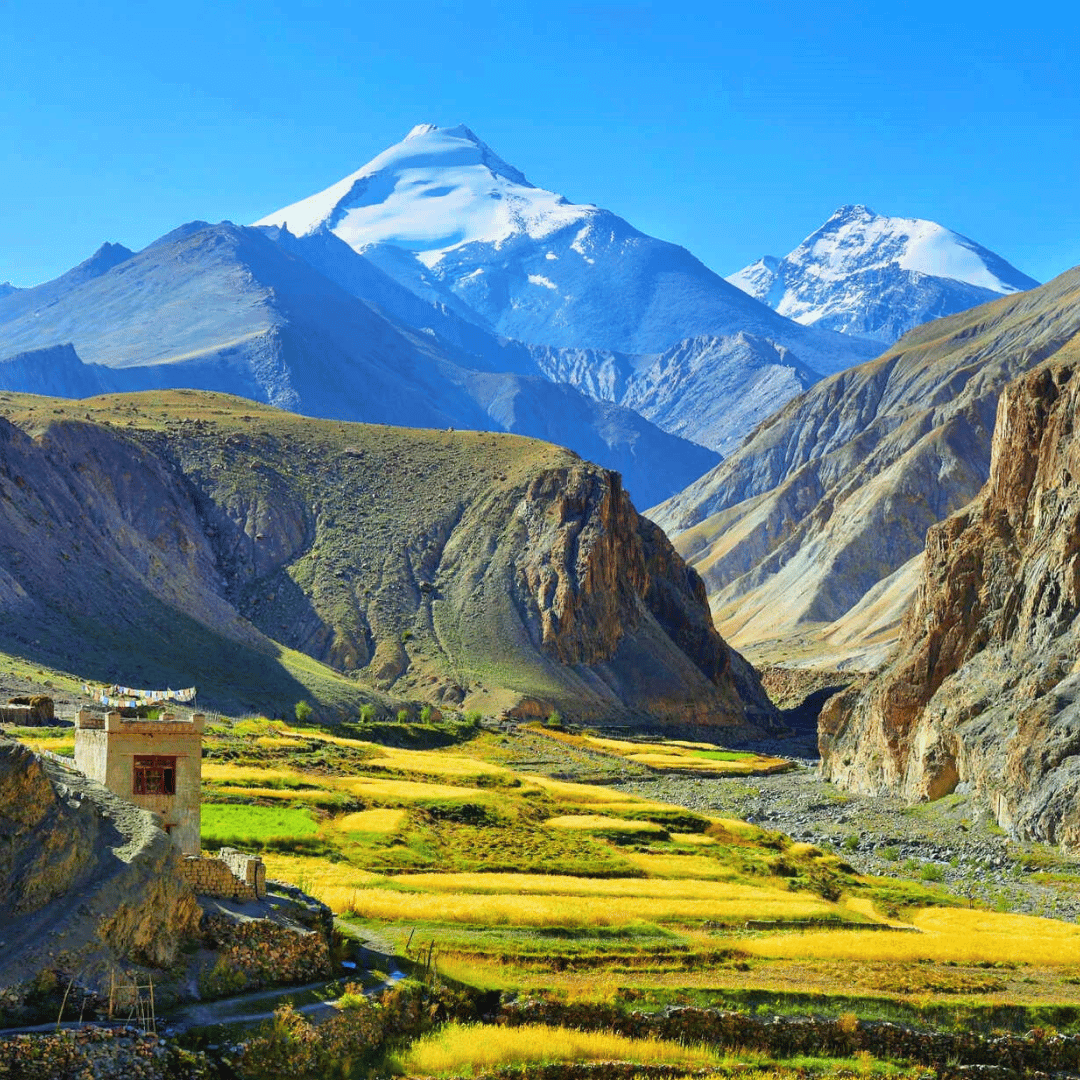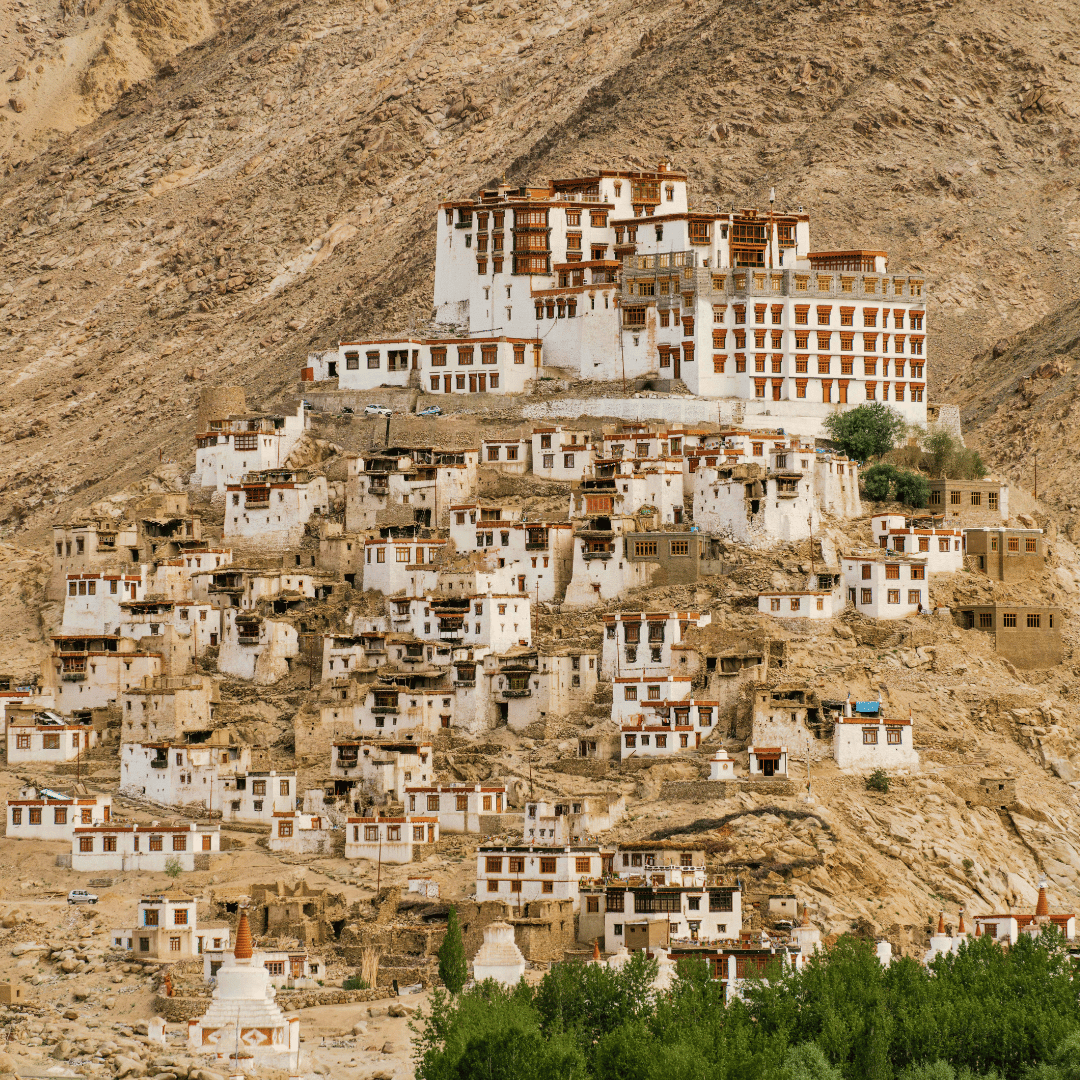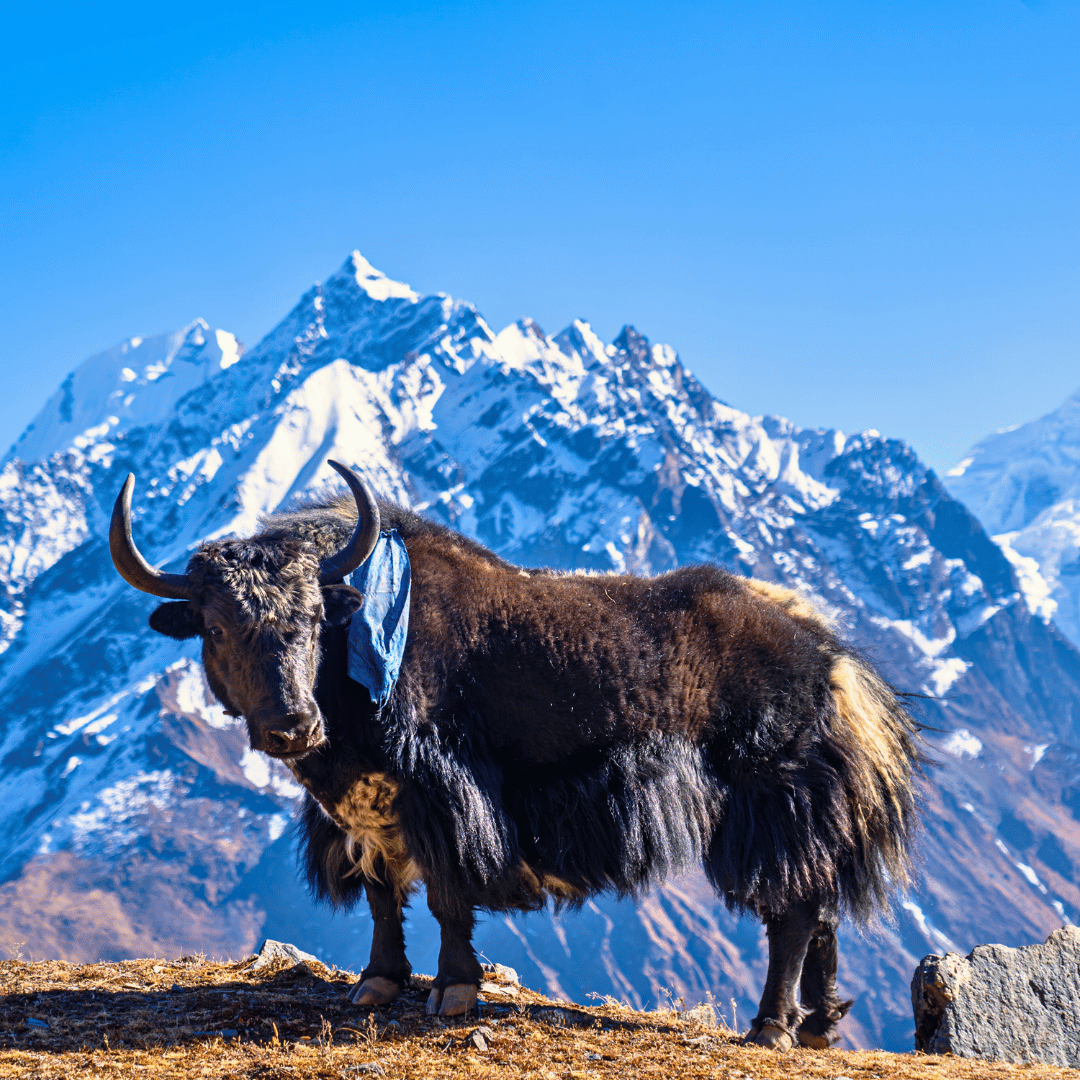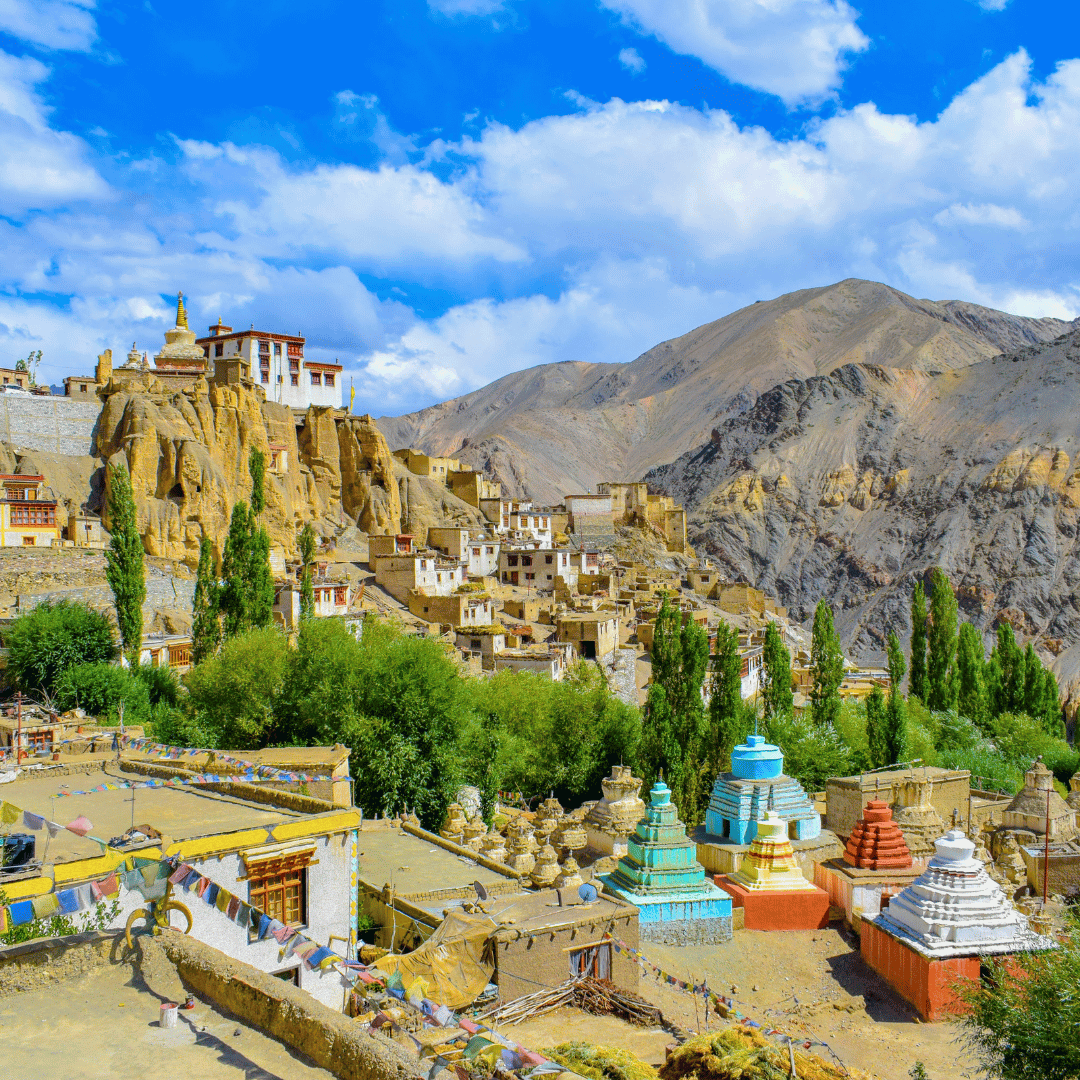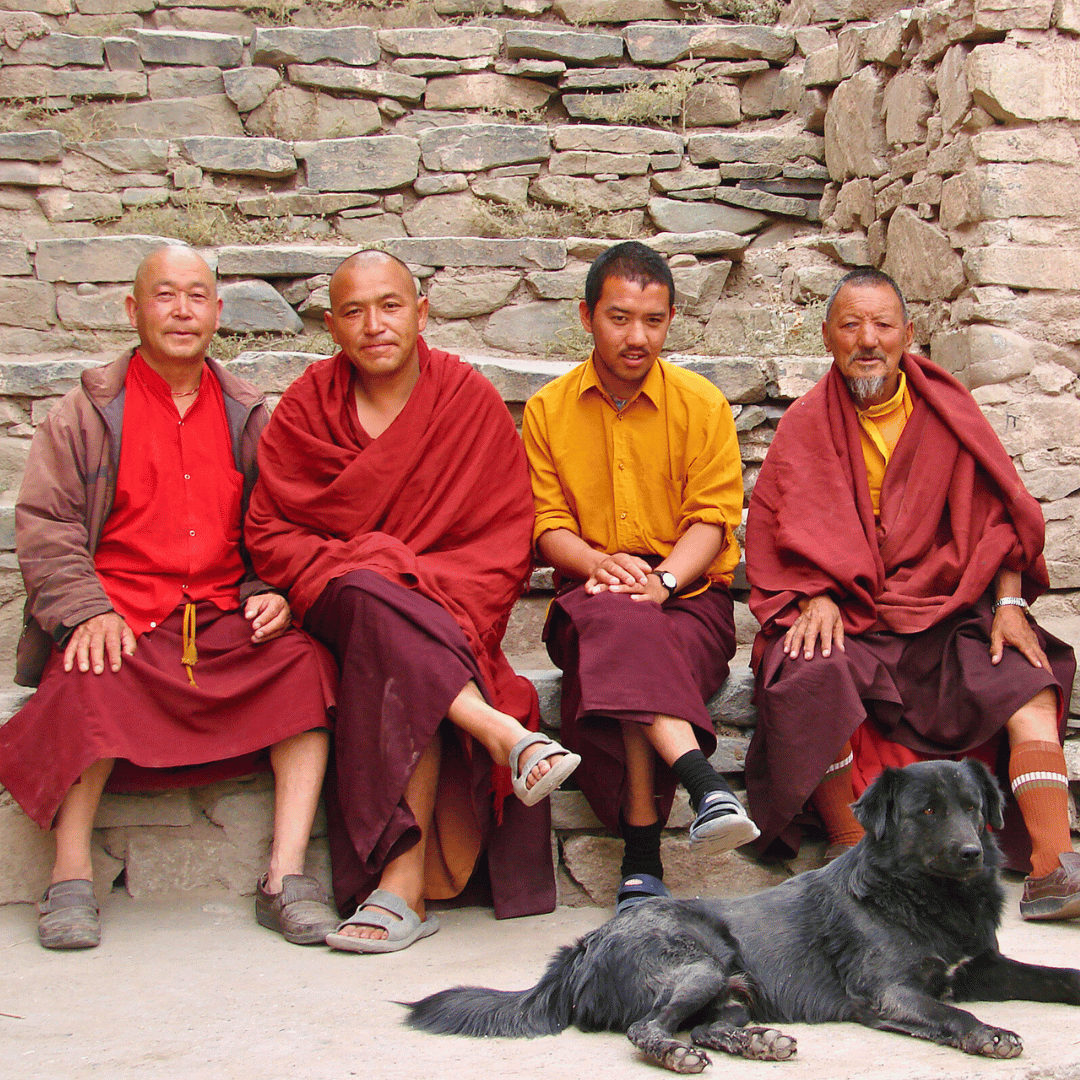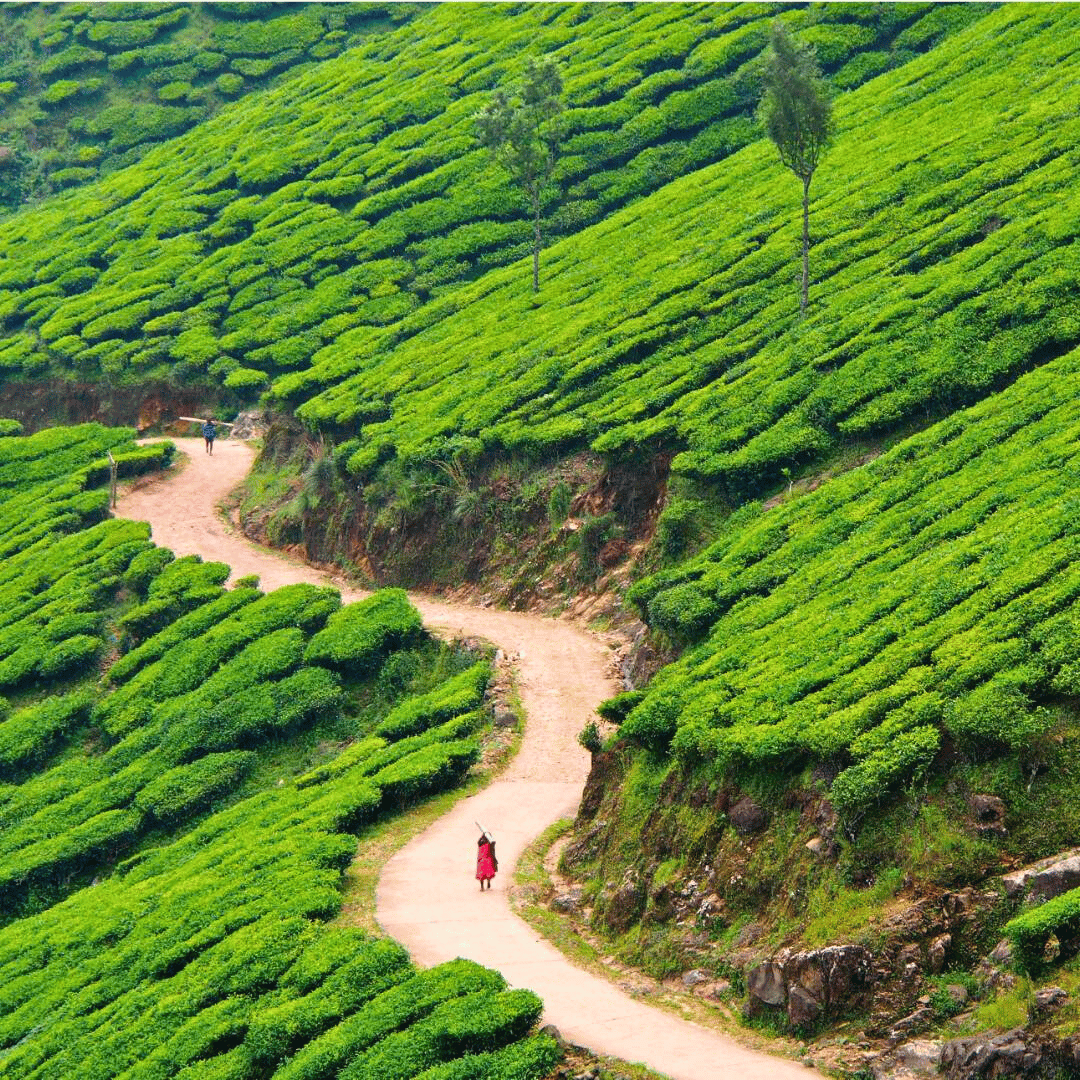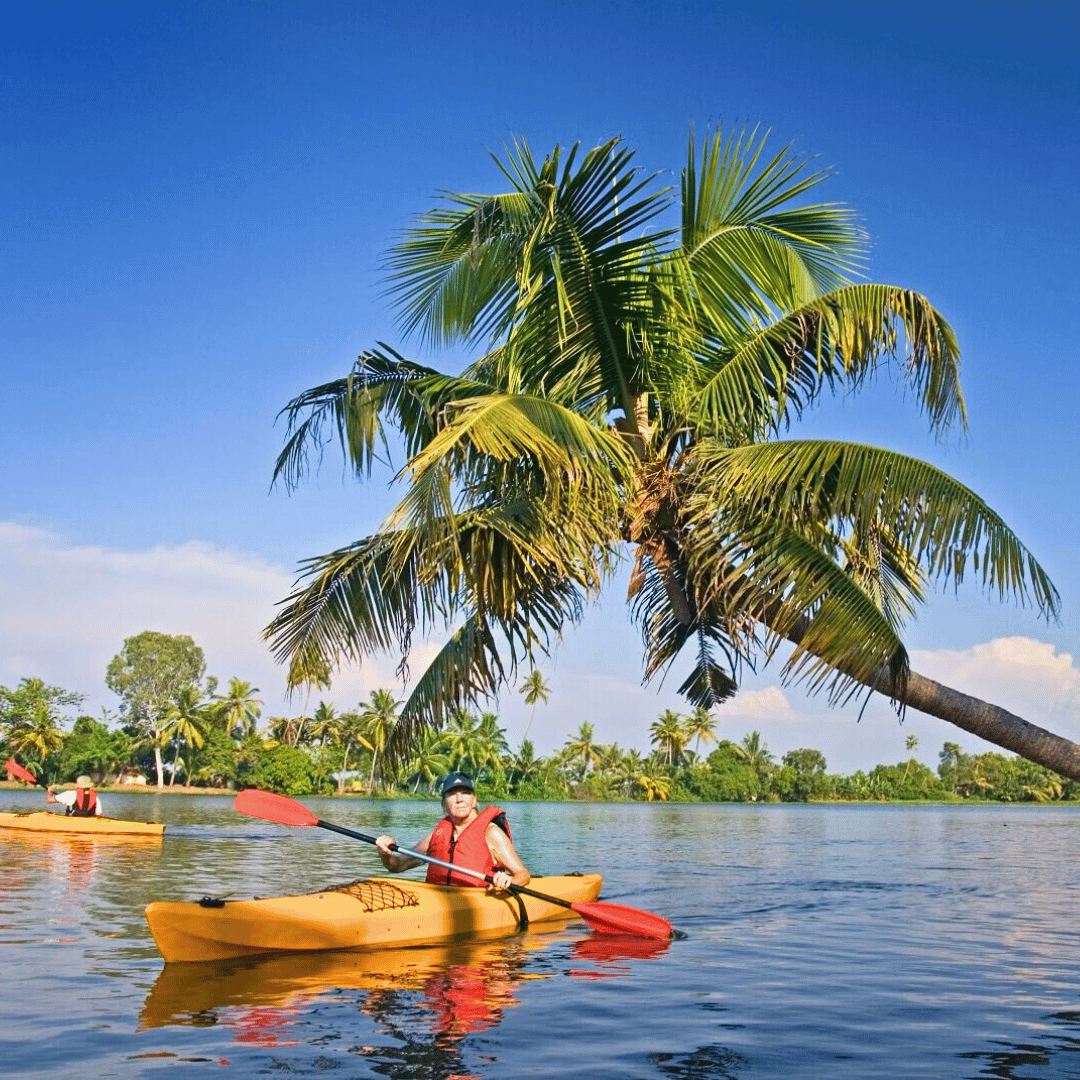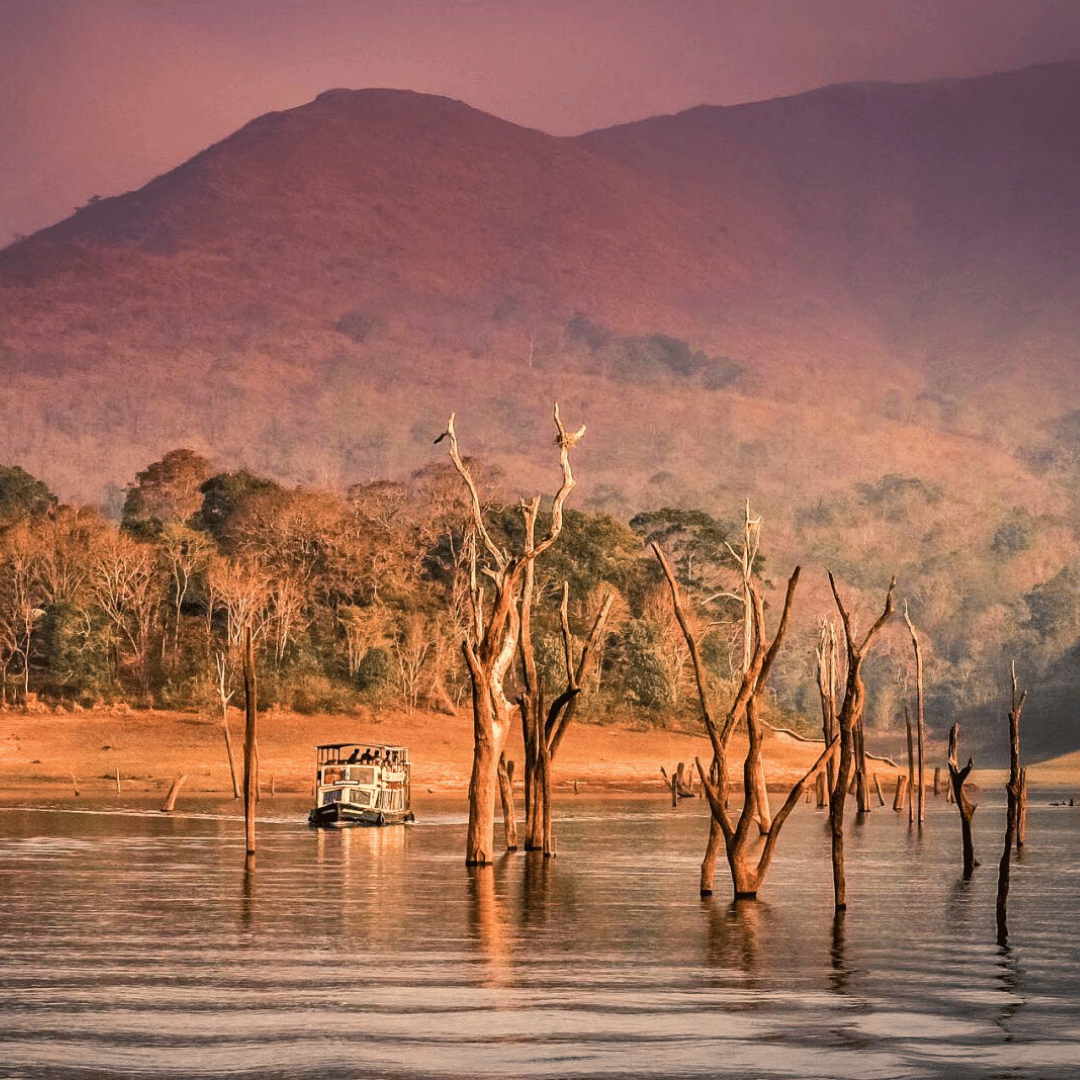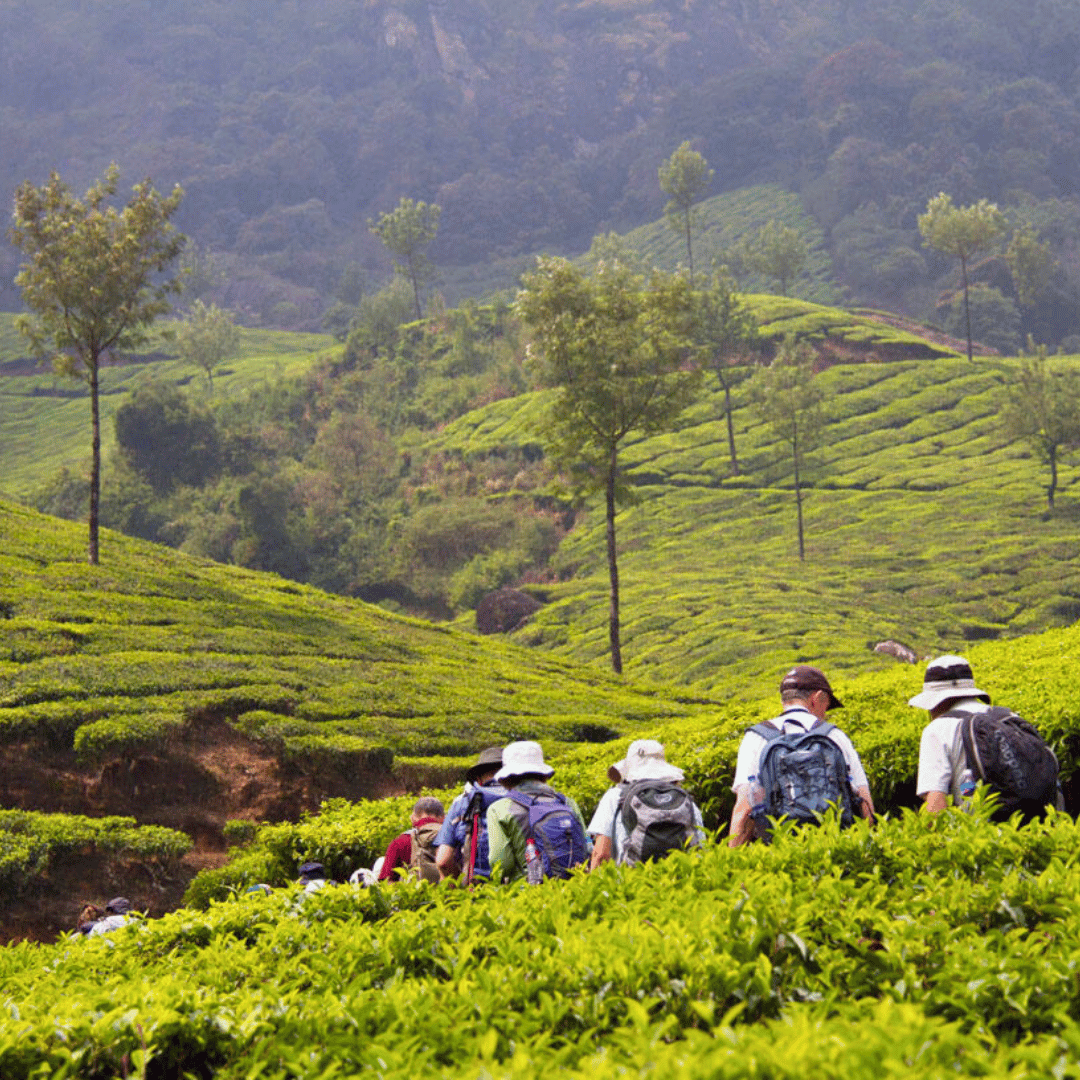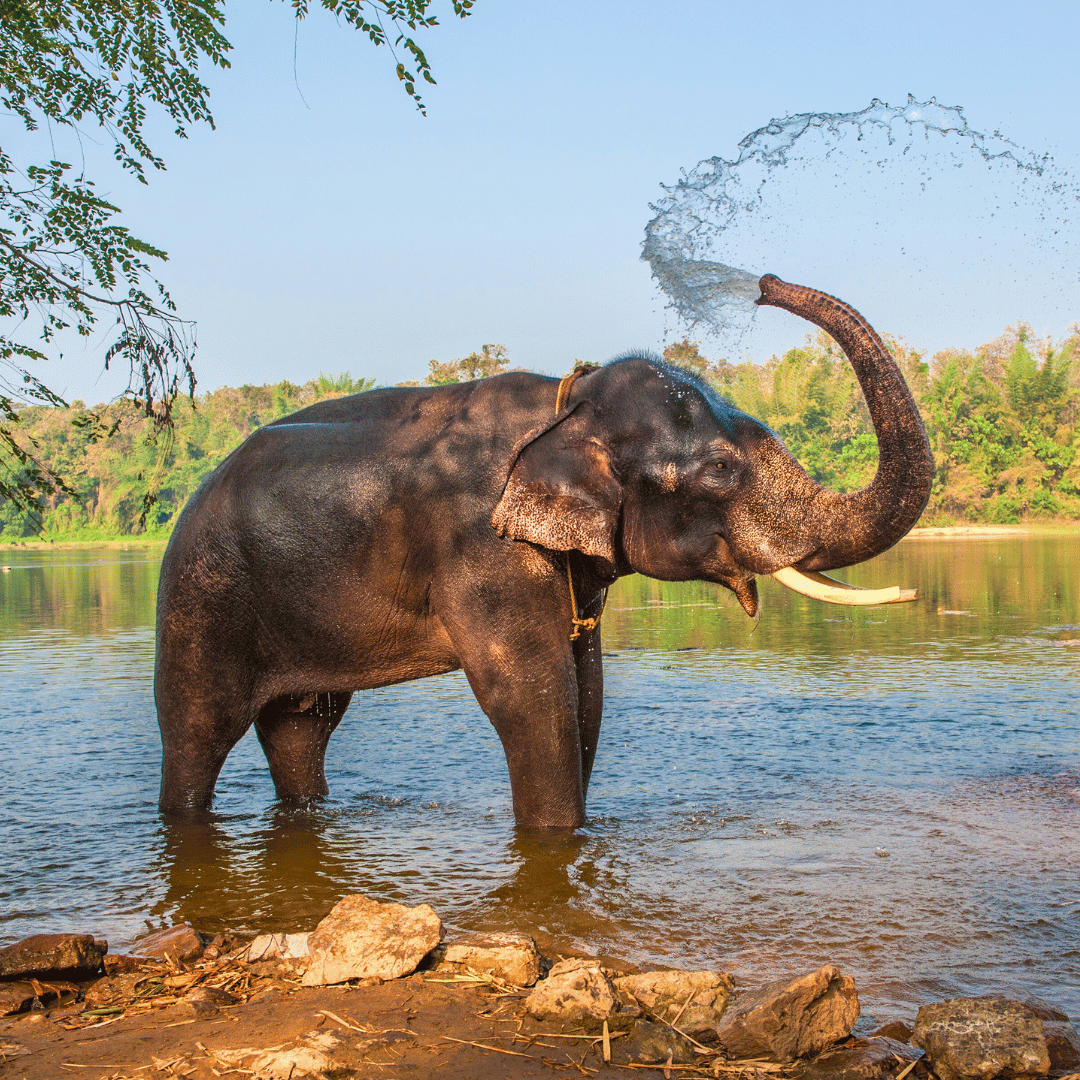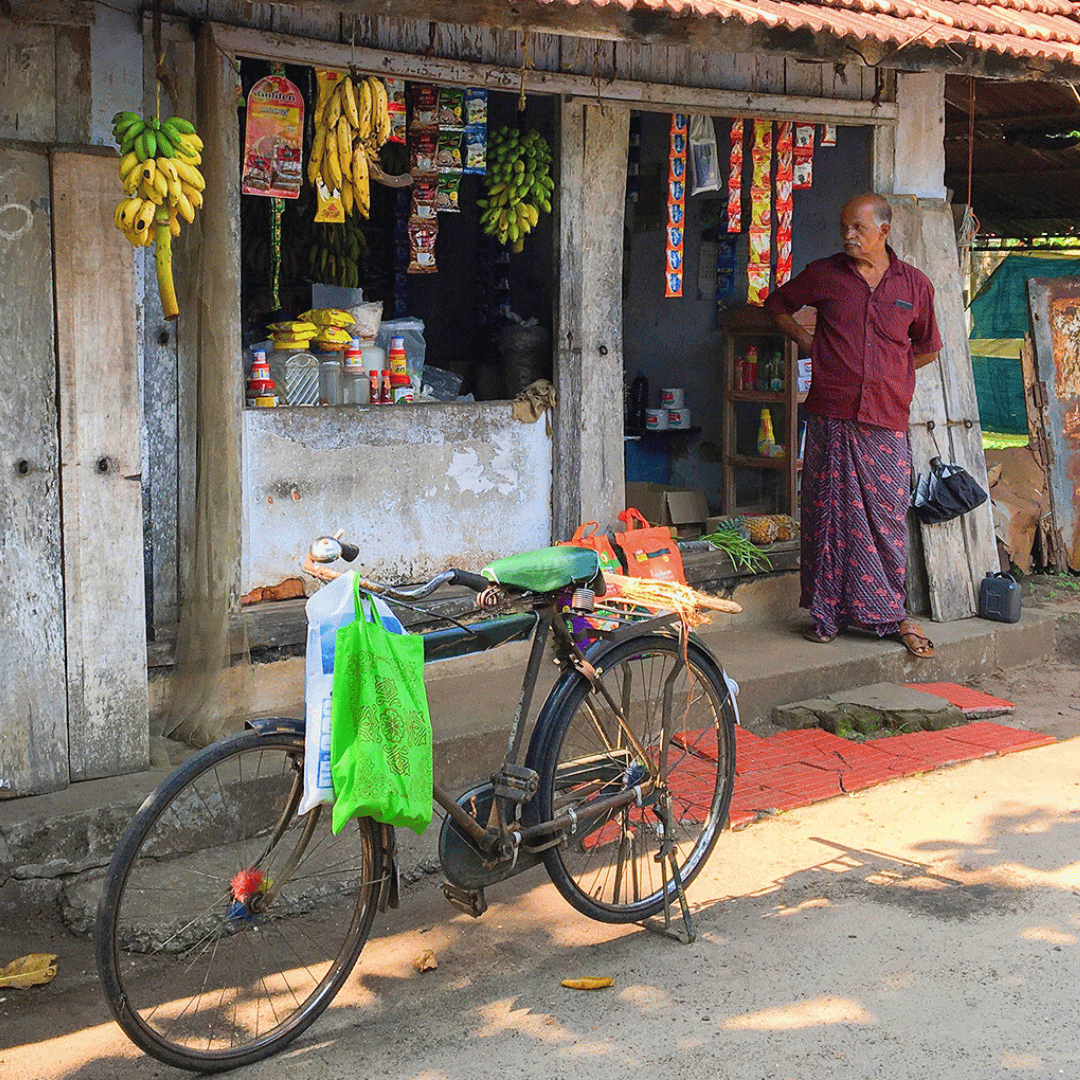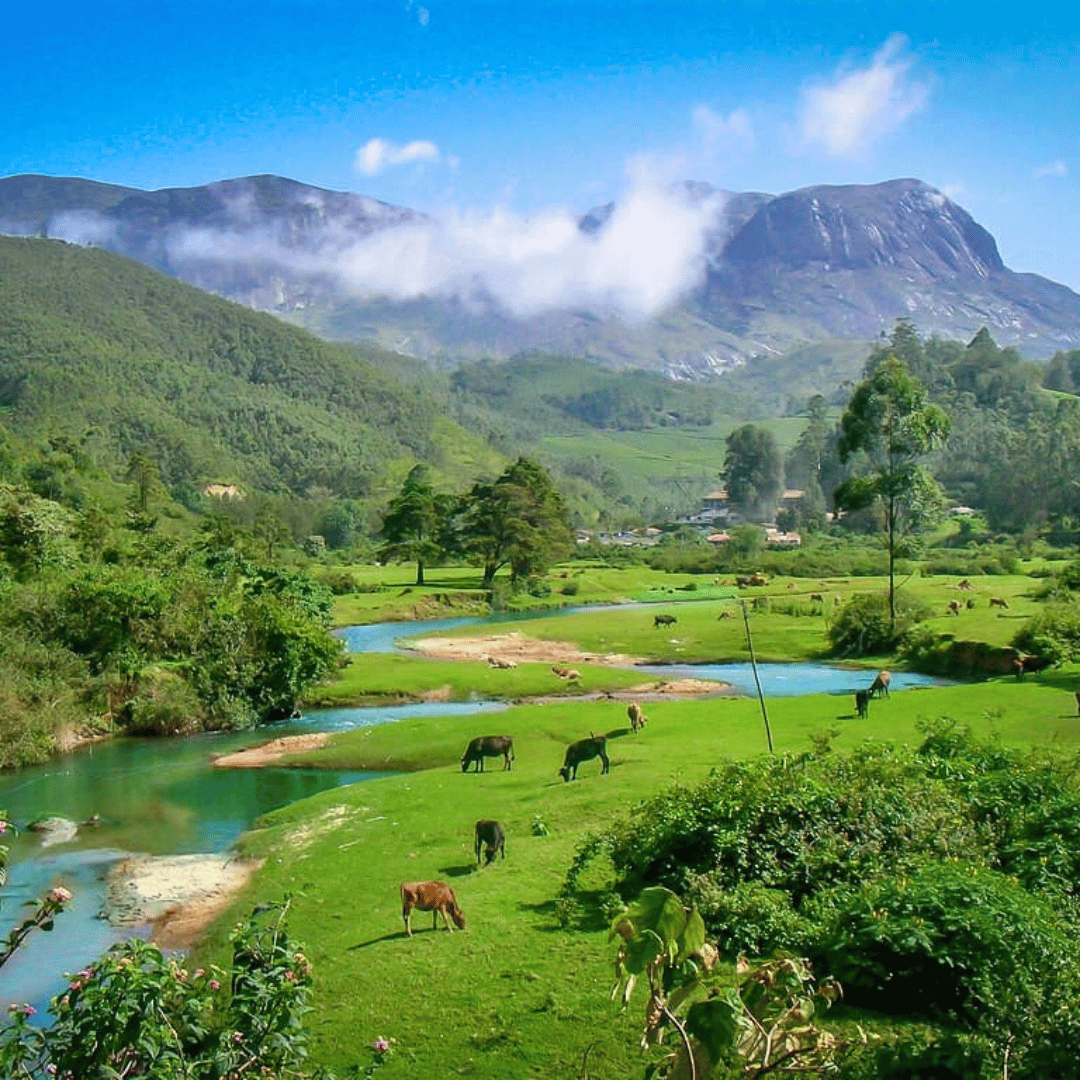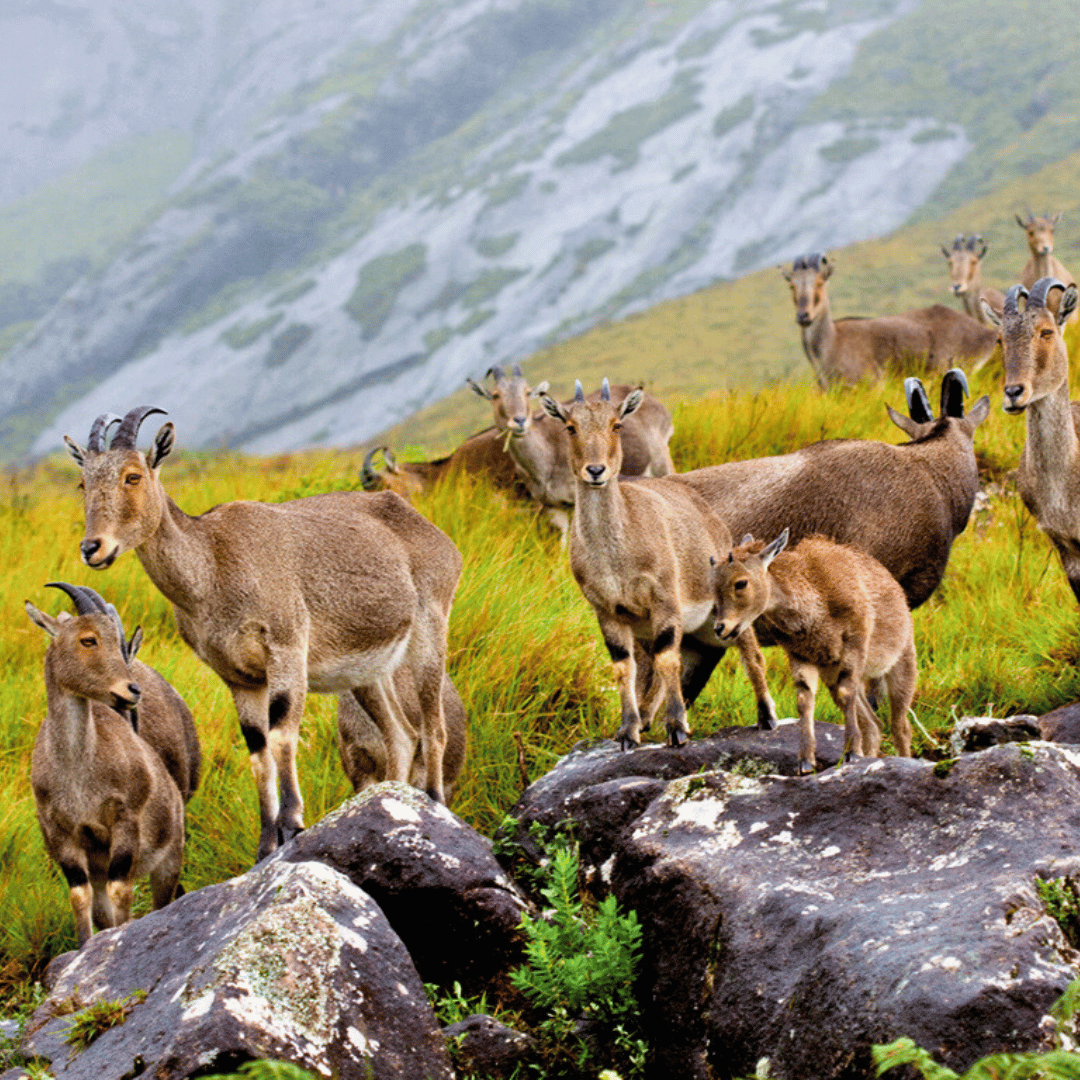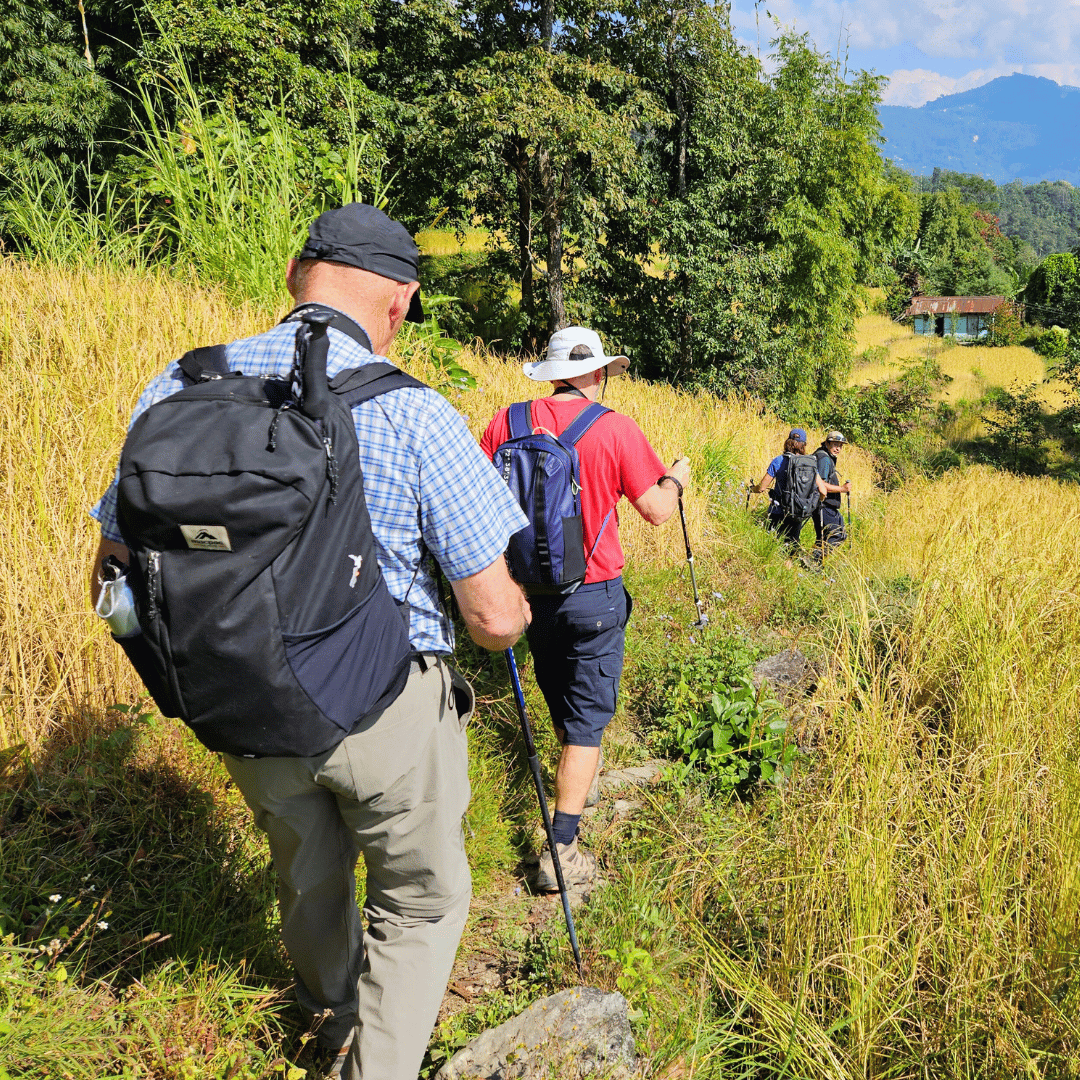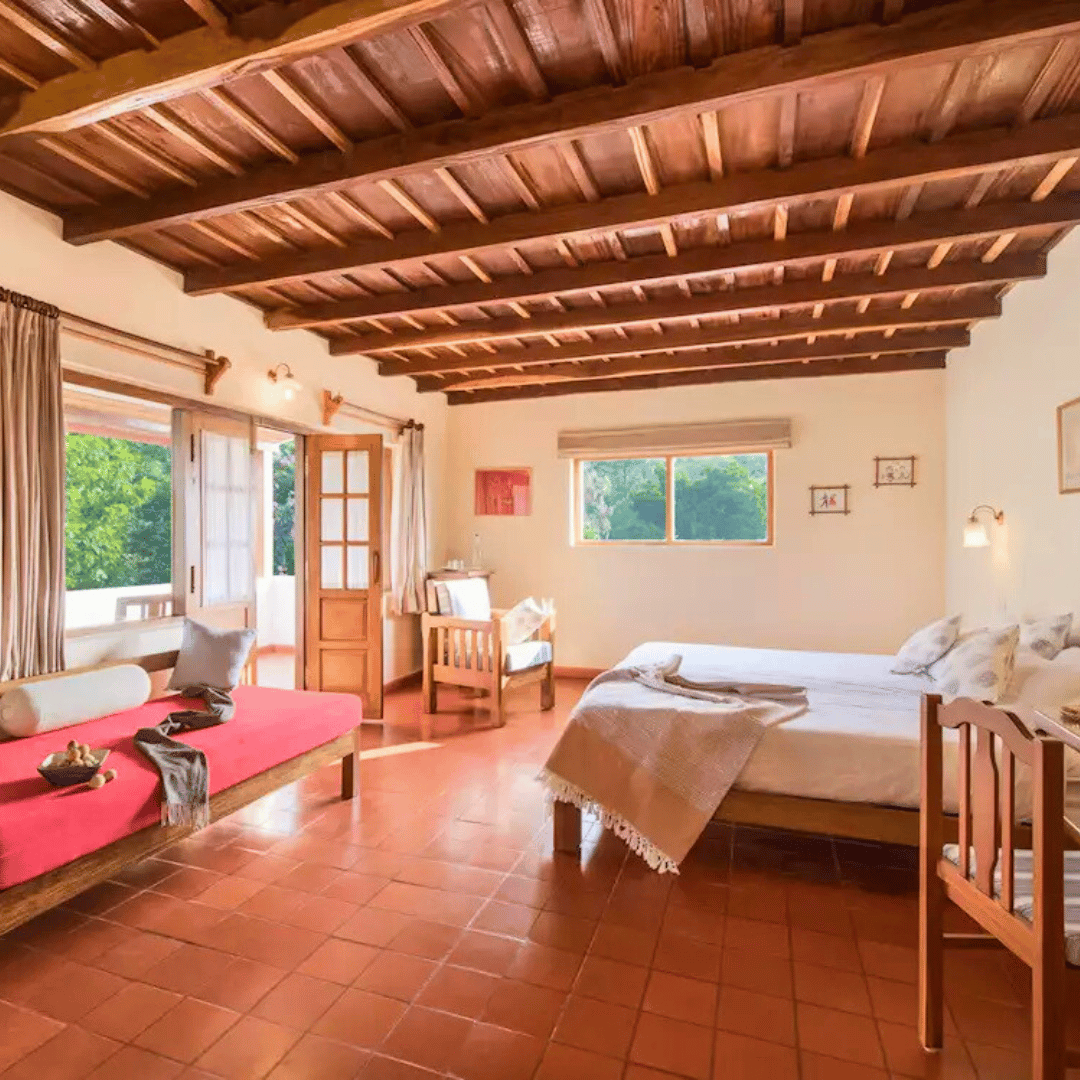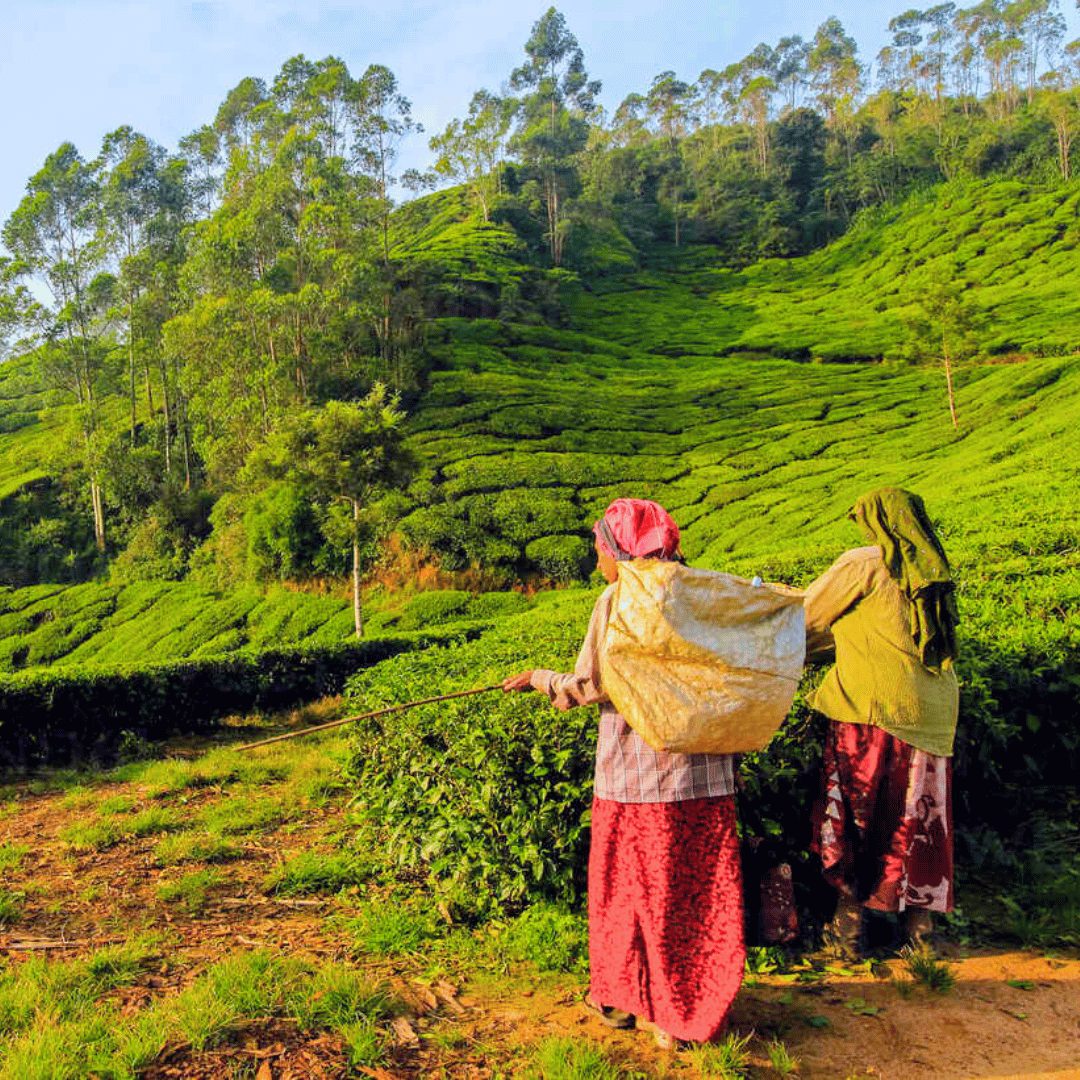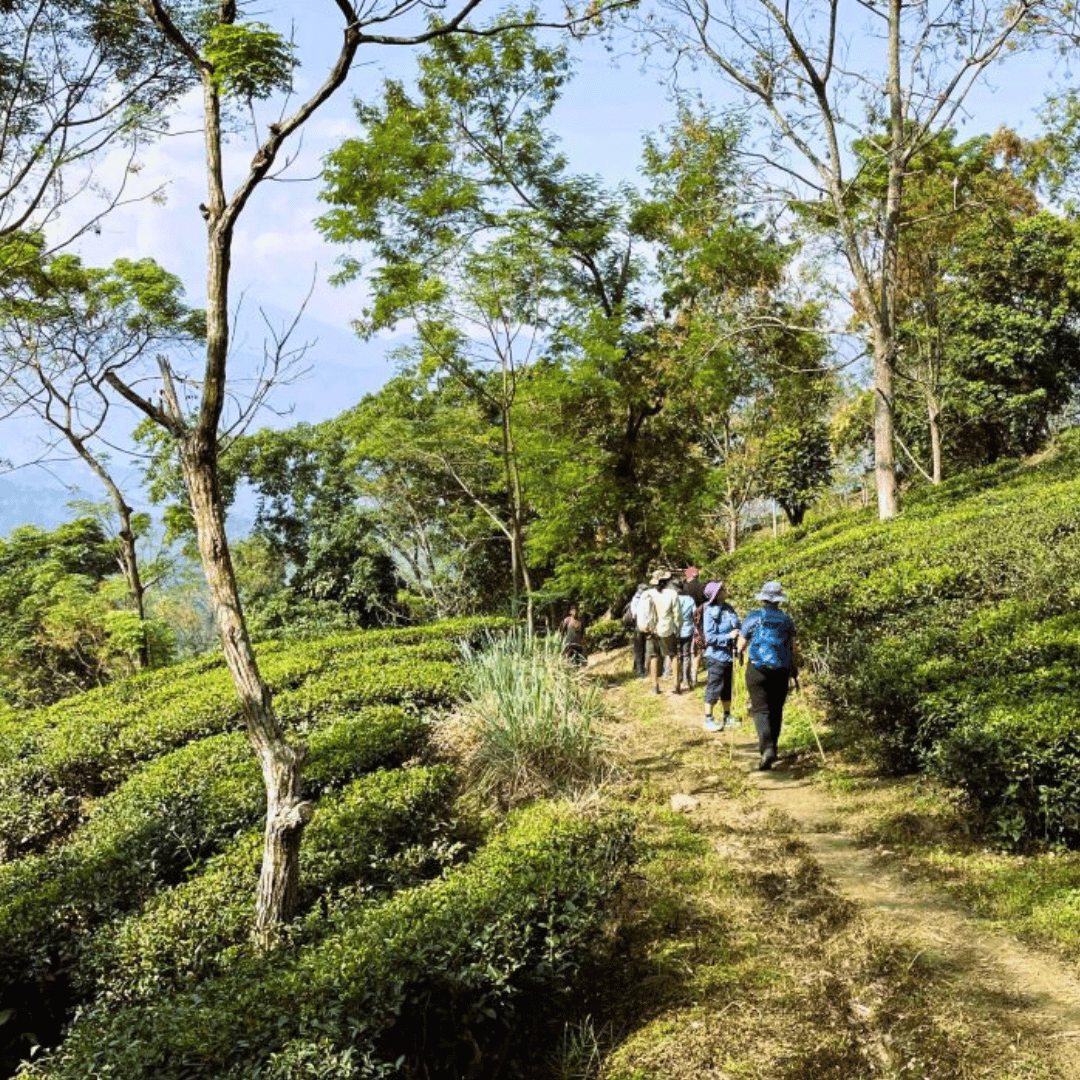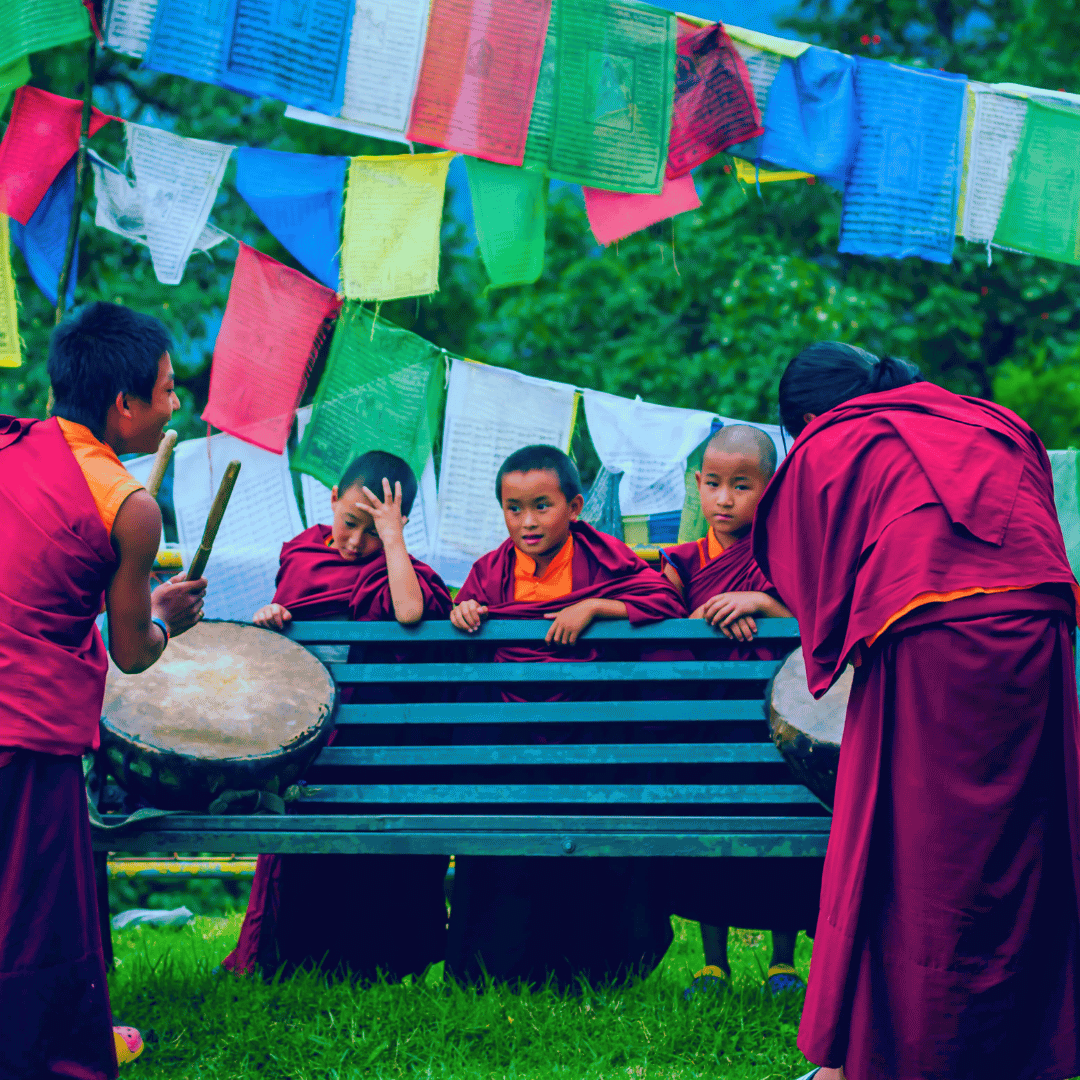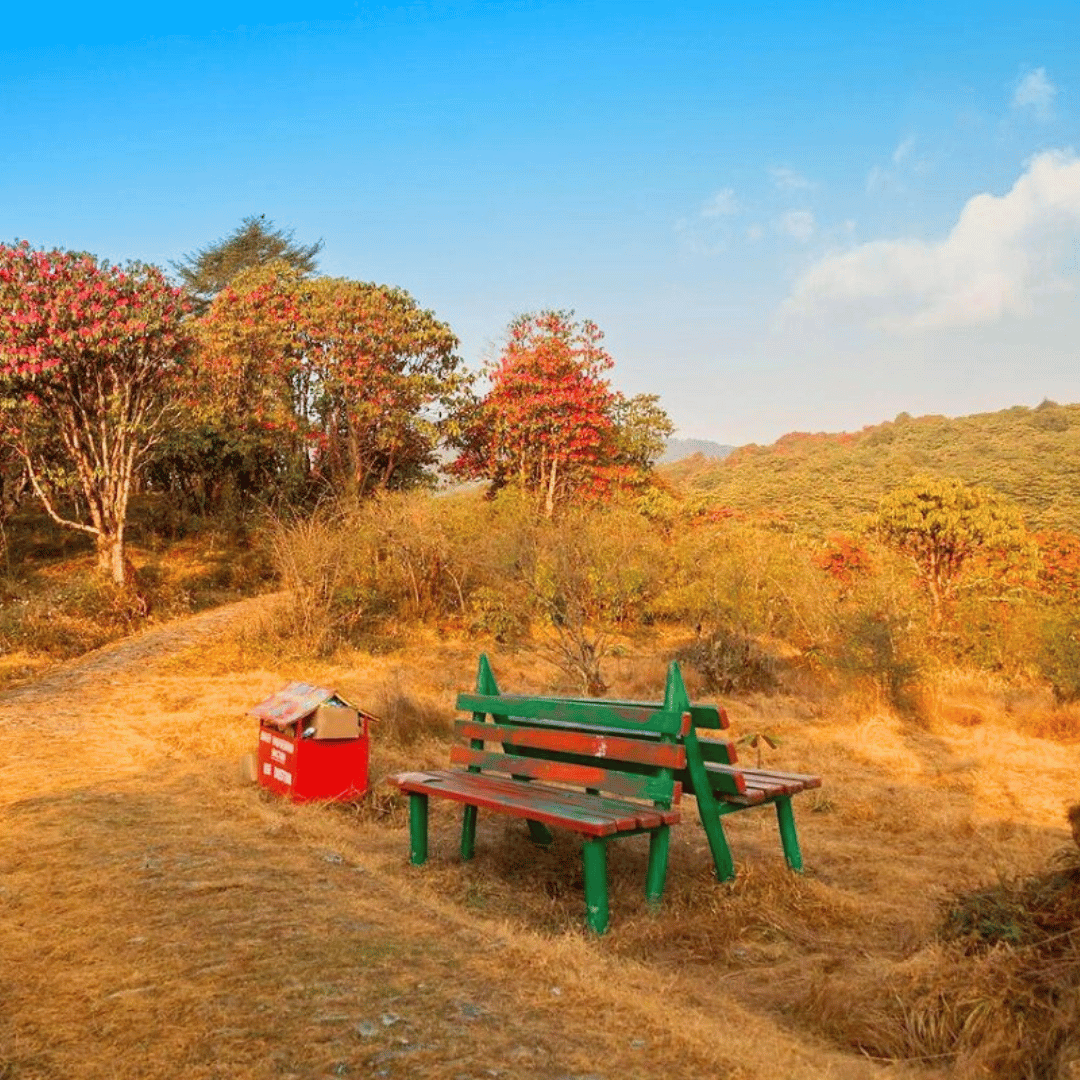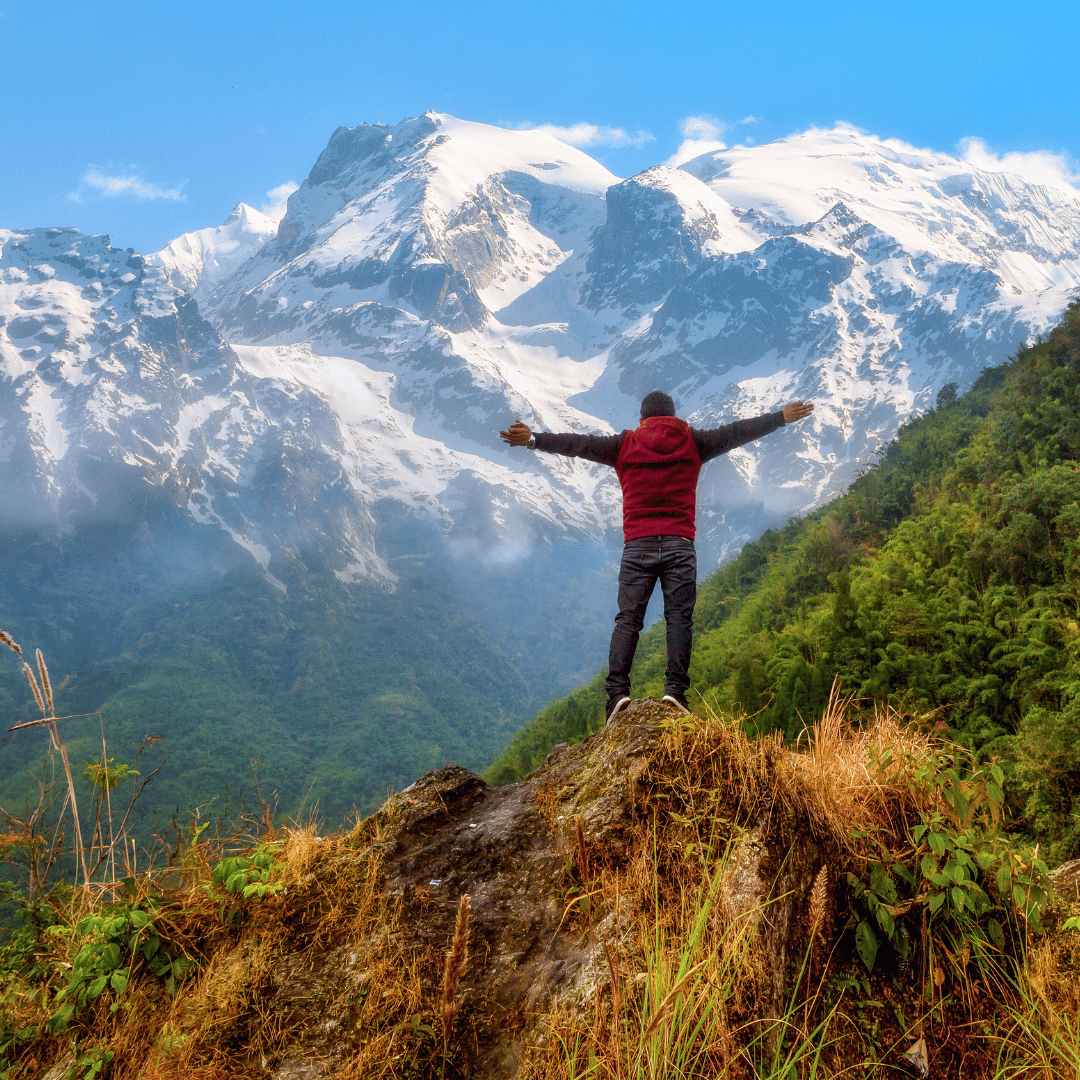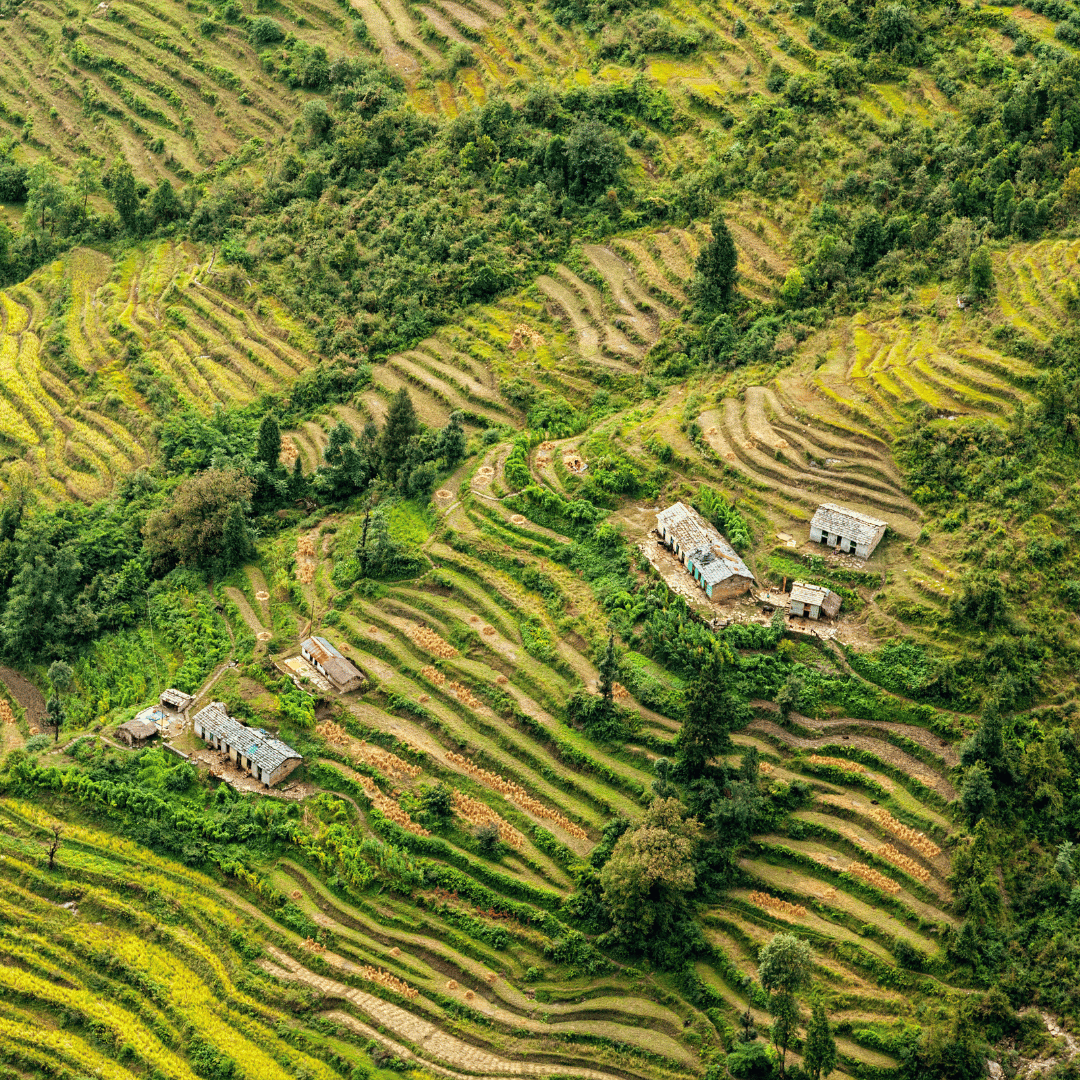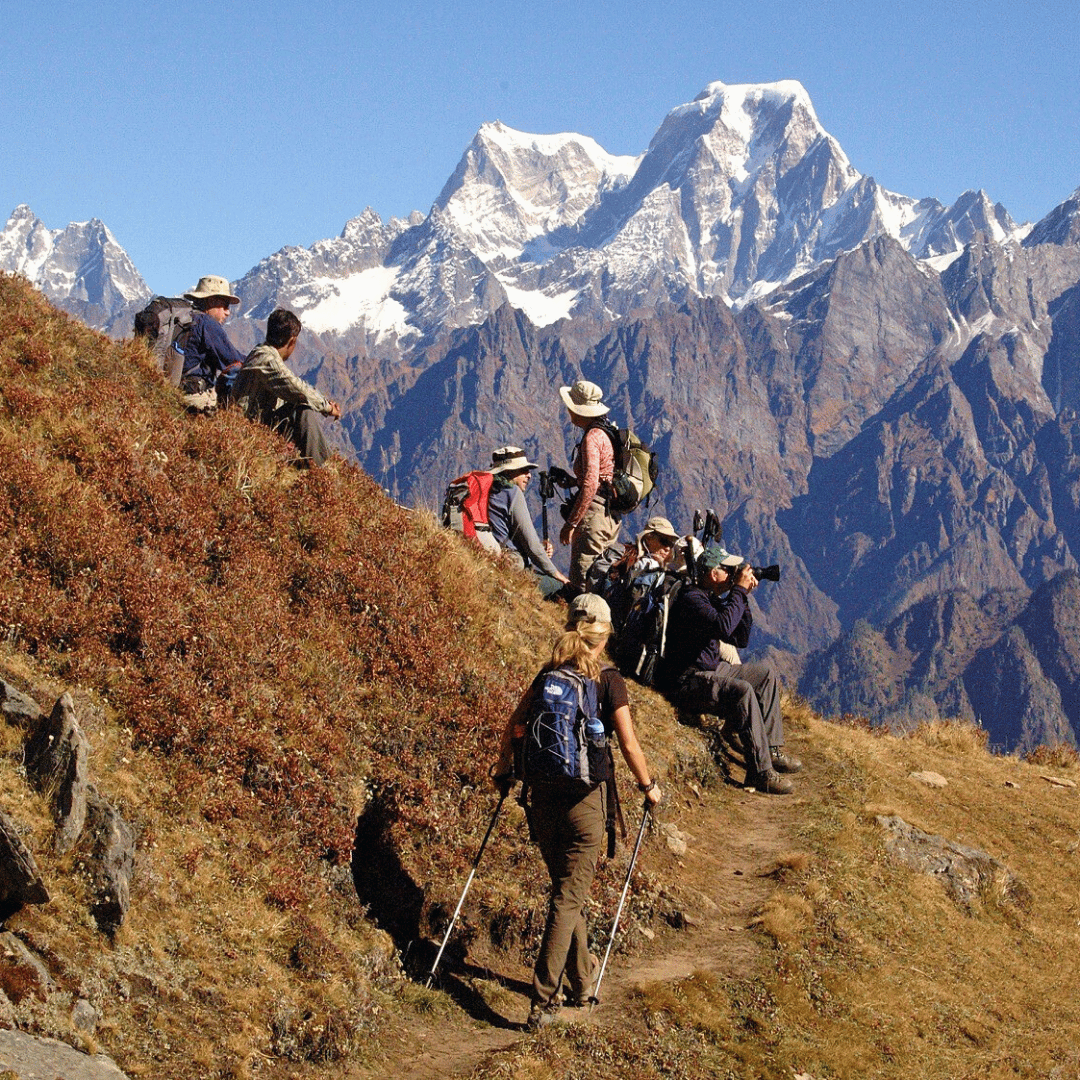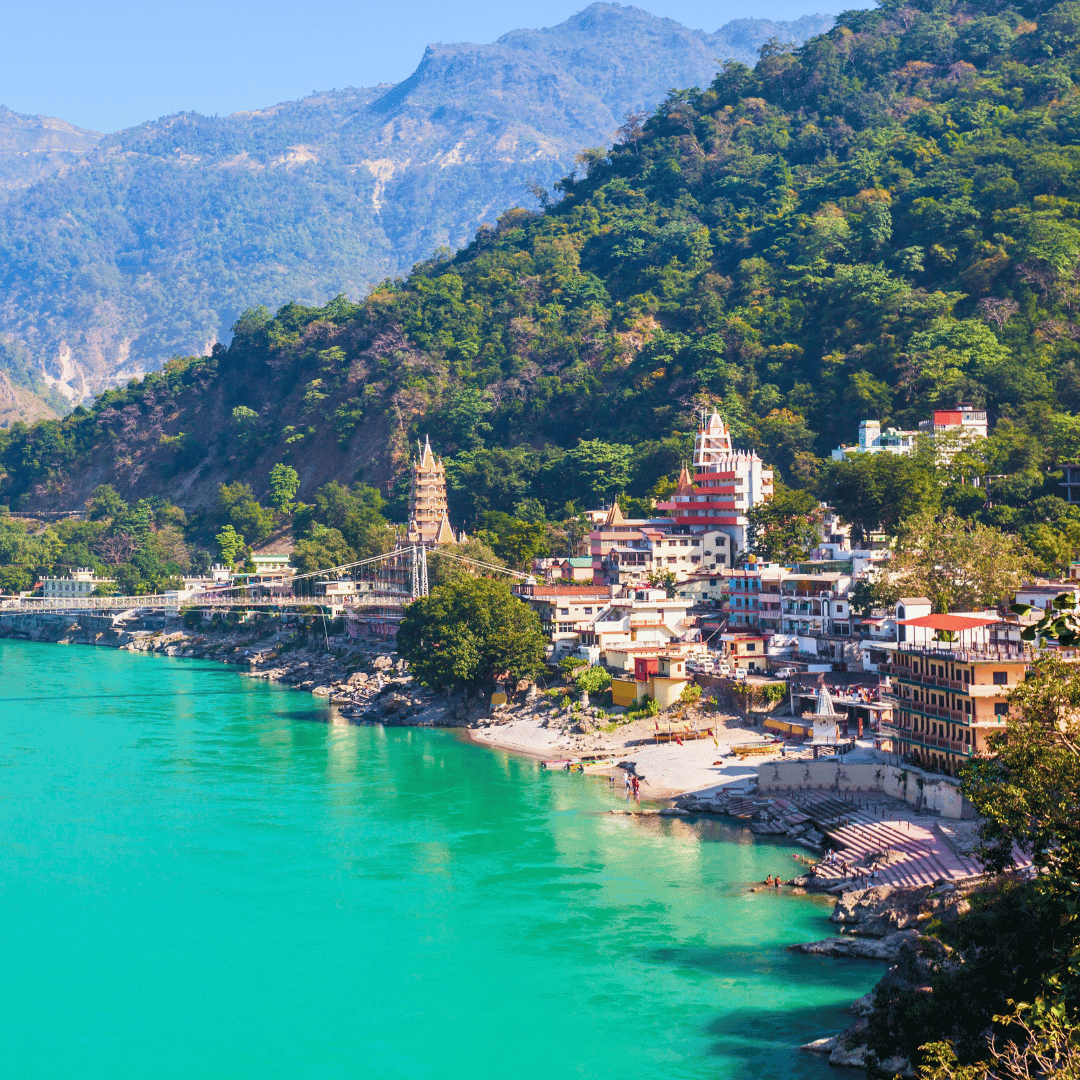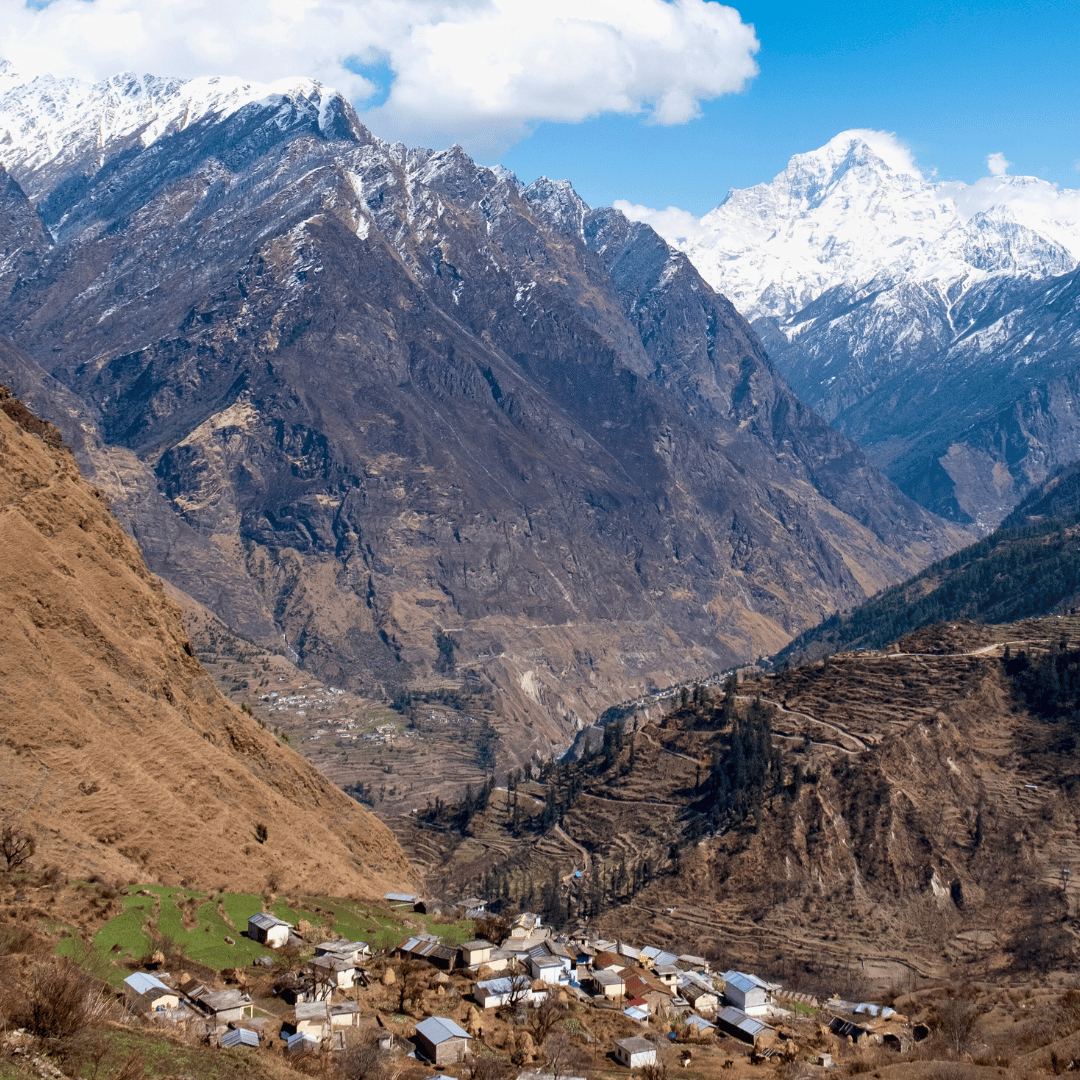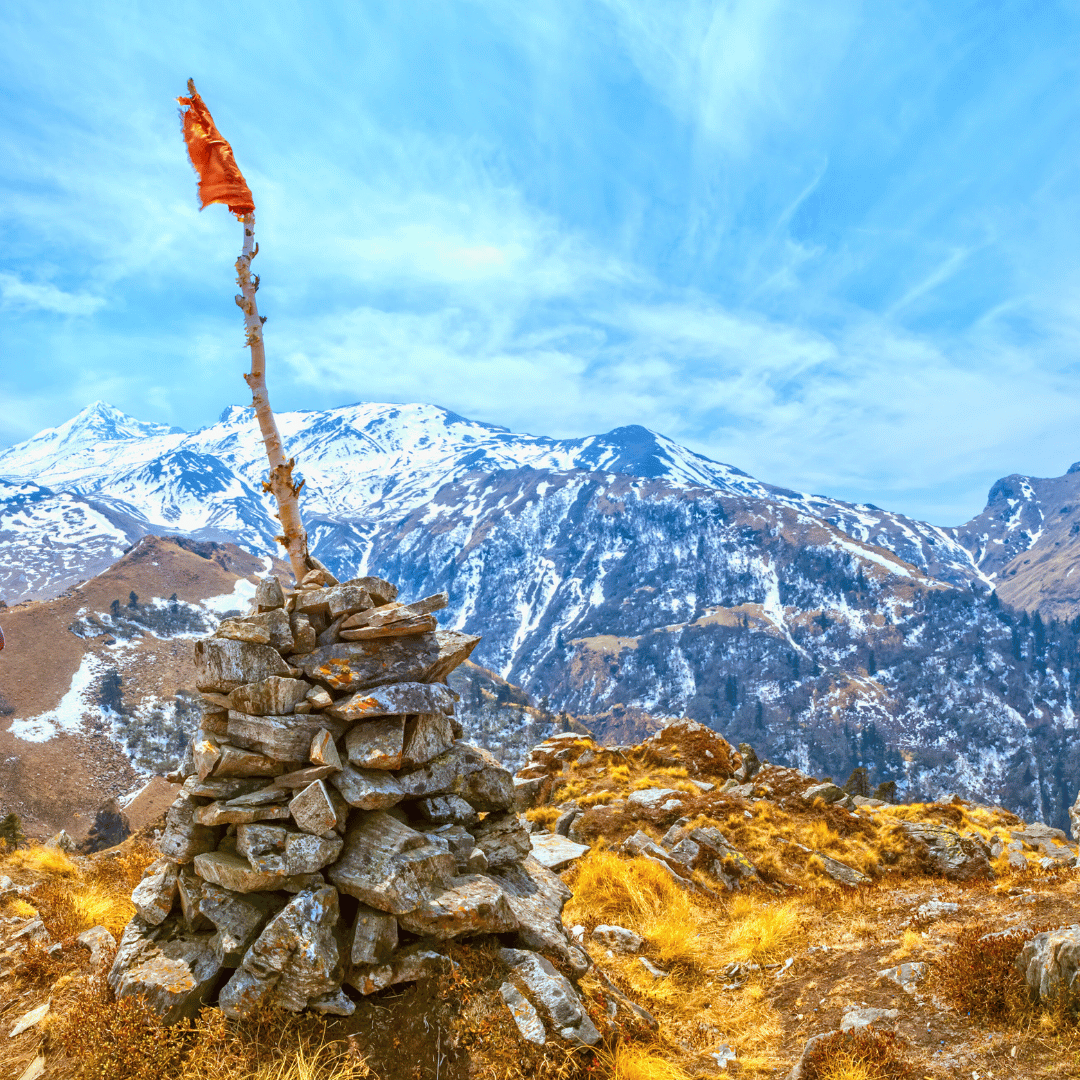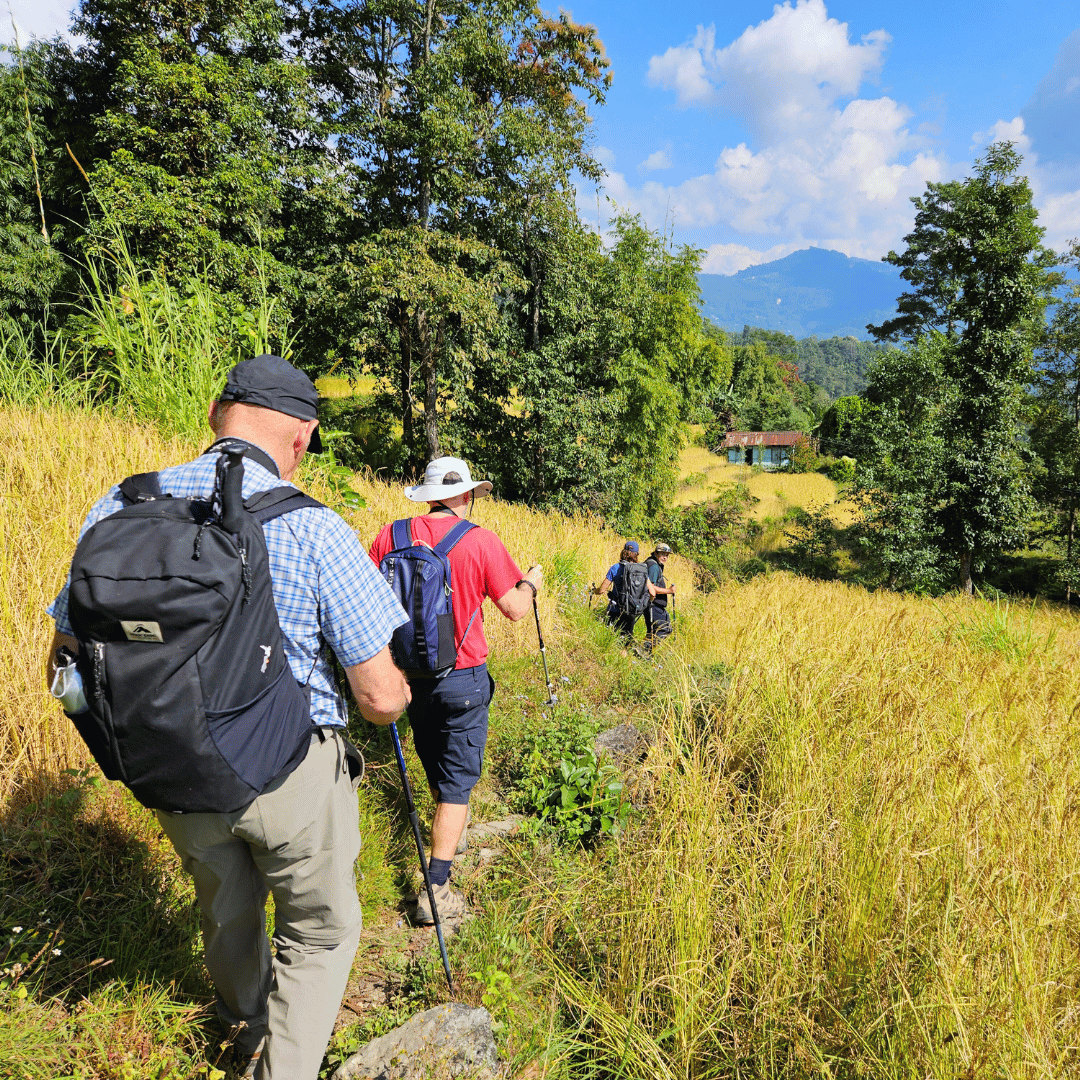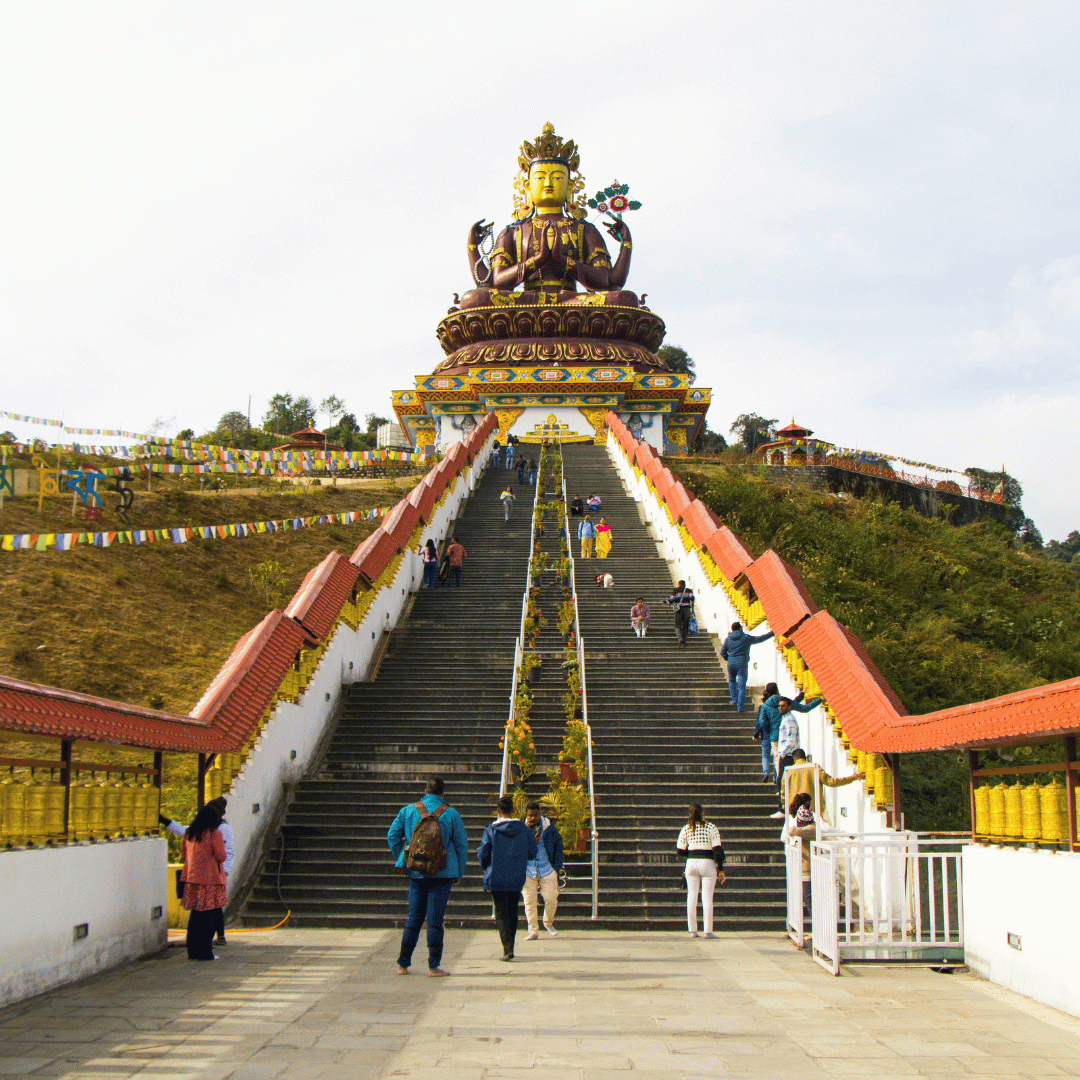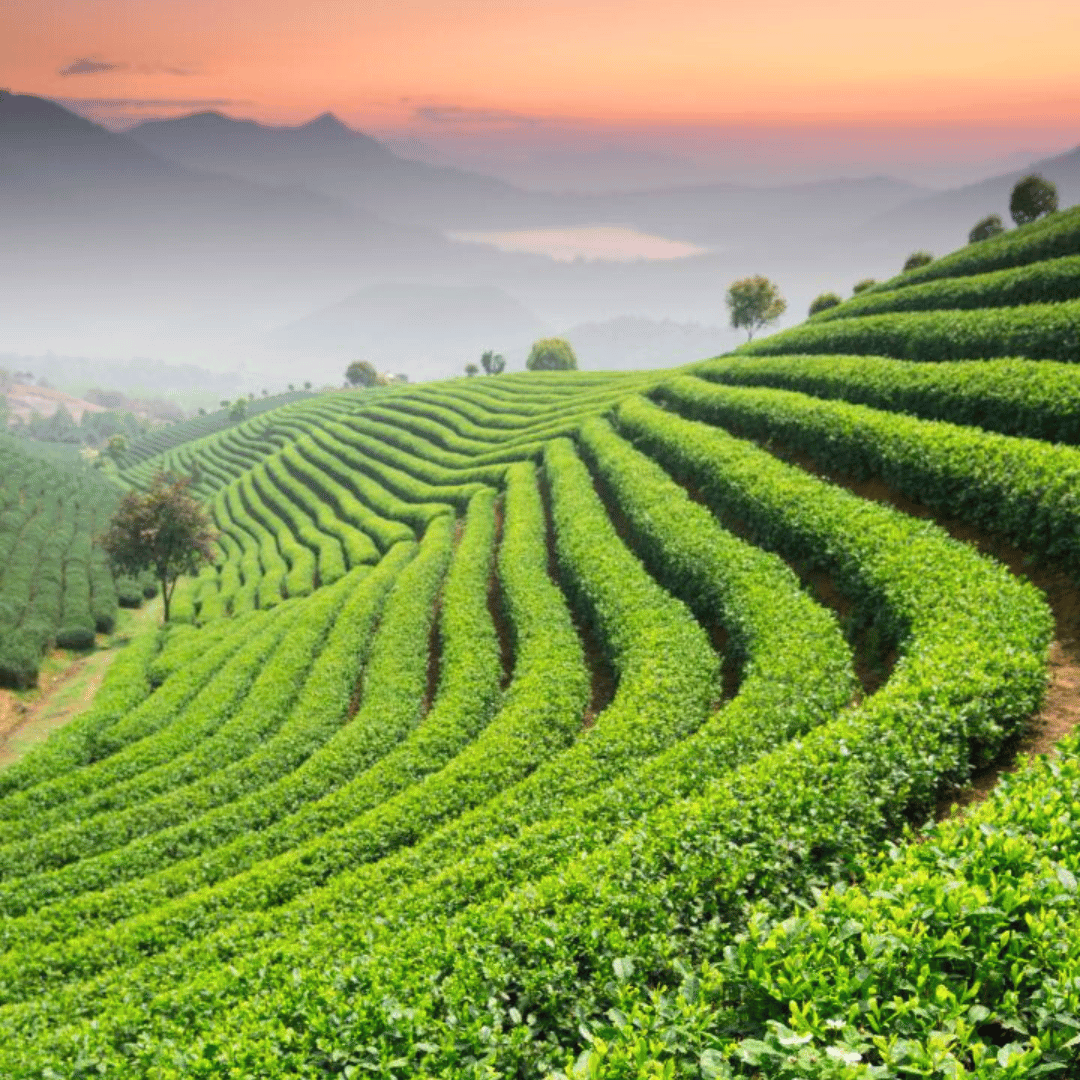Markha Valley Trek Itinerary
-
Welcome to India! You’ll be met and transferred to your hotel on arrival at the airport.
Delhi, India’s capital, is a city of contrasts, where centuries-old history stands alongside the pulse of modern life. Wide boulevards and colonial-era architecture give way to bustling markets, towering skyscrapers, and contemporary developments, reflecting the city’s constant evolution. Despite its rapid growth, Delhi remains deeply connected to its past, with grand monuments and historic sites scattered throughout its urban landscape. Tree-lined avenues and spacious gardens provide open spaces amid the energy of the city, while diverse neighbourhoods reveal a blend of cultures, traditions, and influences from across India. This mix of old and new makes Delhi a fascinating introduction to the country.
-
Spend your morning at leisure - perhaps with a well earned sleep in - before embarking on a half-day guided tour of New Delhi, a city where history and modernity intersect at every turn.
The division between New and Old Delhi reflects the city’s past as both the capital of the Mughal Empire and the British Raj, with each era leaving its own distinct architectural and cultural legacy. As you explore, you’ll notice the contrast between the broad avenues, grand government buildings, and landscaped gardens of New Delhi, designed by British architects in the early 20th century, and the historic enclaves that trace their origins back to the powerful Mughal rulers.
Begin with a visit to Qutab Minar, the tallest stone tower in India, standing at 73 metres. Built in the 12th century by Qutb-ud-din Aibak, the tower is a masterpiece of Indo-Islamic architecture, featuring intricate carvings and verses from the Quran etched into its sandstone walls. The surrounding Qutab Complex is home to ancient ruins, including the Quwwat-ul-Islam Mosque, the first mosque built in India, and the mysterious Iron Pillar, which has stood for over a thousand years without rusting.
Continue to Humayun’s Tomb, a striking example of Mughal architecture and a UNESCO World Heritage site. Built in the 16th century by Empress Bega Begum in memory of her husband, the second Mughal Emperor Humayun, the mausoleum is set within a vast Persian-style garden. Its symmetrical design, domed structure, and use of red sandstone and white marble later inspired the construction of the Taj Mahal. Surrounded by lush greenery and historical structures, the site offers a glimpse into the grandeur of Mughal-era craftsmanship and engineering.
Throughout the morning, you’ll gain insight into Delhi’s layered history, where imperial ambitions, artistic excellence, and cultural influences have shaped the city into what it is today.
-
Early in the morning, transfer to the airport for your flight to Leh, home to the world’s highest commercial airport. As your plane descends over the rugged Himalayan landscape, you’ll get your first glimpse of Ladakh’s stark yet striking terrain - vast, barren mountains interspersed with winding rivers and remote settlements. On arrival at Leh’s Kushok Bakula Rimpochee Airport, situated at an altitude of 3505m, you’ll be met and transferred to your hotel. Given the high elevation, the rest of the day is dedicated to acclimatisation - taking it slow is essential to help your body adjust to the thinner air.
Leh serves as the administrative and cultural heart of Ladakh, a region steeped in Tibetan Buddhist traditions and surrounded by towering mountain ranges. Once an important stop on ancient trade routes between India, Tibet, and Central Asia, the town retains a distinct character, with its mix of whitewashed stupas, centuries-old monasteries, and lively marketplaces. The town’s streets are lined with traditional mud-brick houses, prayer flags fluttering in the wind, and welcoming locals dressed in vibrant Ladakhi attire.
In the evening, take a relaxed stroll through Leh’s bustling bazaar, where traders and artisans sell everything from handwoven pashmina shawls and silver jewellery to Tibetan prayer wheels and local spices. The aroma of freshly baked Ladakhi bread and steaming cups of butter tea fills the air, offering an introduction to the region’s unique flavours. As the sun sets behind the mountains, Leh’s lively yet laid-back atmosphere provides the perfect introduction to the adventure ahead.
-
After breakfast, set out to explore two of Ladakh’s most significant monasteries - Shey and Thiksey. Your first stop is Shey Palace and Monastery, once the summer residence of Ladakh’s kings. Built in 1645, this historic complex stands on a rocky hill overlooking the Indus Valley, offering sweeping views of the surrounding landscapes. Within the monastery, you’ll find a striking 12-metre-high statue of Shakyamuni Buddha, crafted from gilded copper and adorned with precious stones. The monastery walls are decorated with murals depicting scenes from Buddhist mythology, while small prayer rooms house ancient relics and statues, preserving Ladakh’s spiritual heritage.
Continue to Thiksey Monastery, one of the most impressive gompas in the region, perched high on a hilltop with a commanding view of the Indus River. Often compared to Tibet’s Potala Palace for its tiered architecture, Thiksey is a vibrant centre of Buddhist learning and daily worship. Within its halls, monks engage in prayer and study, while visitors can admire an extensive collection of hand-written and painted prayer books, thangkas (Buddhist paintings), and intricate murals. The monastery’s most famous attraction is the massive 15-metre statue of Maitreya Buddha, housed in a dedicated temple, its serene expression overlooking the valley below.
After lunch, take a leisurely walk to Shanti Stupa, a white-domed Buddhist monument built by Japanese monks to promote world peace. Set on a hilltop, the stupa offers one of the most panoramic views of Leh, with the town’s whitewashed buildings contrasting against the barren mountains in the distance. As the afternoon light changes, the landscape takes on a golden glow, creating a peaceful setting for reflection. The stupa is particularly stunning at sunset, when the sky turns shades of pink and orange, casting a soft light over the rugged Himalayan terrain.
-
After breakfast, set out to explore two other significant monasteries in Ladakh - Phyang and Spituk - each offering a glimpse into the region’s rich Buddhist heritage.
Your first stop is Spituk Monastery, founded in the 11th century and perched on a rocky hill overlooking the Indus River. Originally established by Od-de, the elder brother of the renowned Buddhist translator Lotsawa Rinchen Zangpo, Spituk has since evolved into a vibrant religious centre. The monastery houses a striking collection of ancient thangkas (Buddhist paintings), statues, and sacred texts, with its prayer halls adorned with intricate murals and butter lamps flickering in devotion. A visit here provides an opportunity to witness the spiritual atmosphere of monastic life, where resident monks engage in daily prayers and rituals.
Continue to Phyang Monastery, a remarkable hilltop structure that bears similarities to Likir Monastery in its setting and architecture. Founded in the 16th century, Phyang belongs to the Drikung Kagyu sect of Tibetan Buddhism and is home to a thriving community of monks. Its walls are decorated with colourful frescoes depicting Buddhist deities and stories from the Mahayana tradition, while its collection of ancient manuscripts and artefacts provides insight into Ladakh’s long-standing Buddhist lineage. With sweeping views of the surrounding valley, the monastery offers a quiet and reflective setting, contrasting with the dramatic, rugged landscape that defines Ladakh.
Return to the hotel for lunch before heading to the SOS Tibetan Refugee Camp near Choglamsar. Established to support Tibetan refugees fleeing persecution, the camp has grown into a self-sustaining community dedicated to preserving Tibetan culture, education, and traditions. A visit to the camp offers a chance to learn about the resilience of the Tibetan people, see traditional handicrafts being made, and witness the efforts to keep their language, customs, and Buddhist teachings alive in exile.
-
In the morning, set off on a scenic drive to Shang, the starting point of your trek. The journey takes you through Ladakh’s dramatic landscapes, with rugged mountain ridges, winding roads, and occasional glimpses of small villages dotting the valley. Along the way, stop to visit Hemis Monastery, the largest and one of the most revered monastic institutions in Ladakh.
Founded in 1620 by King Singge Namgyal, a great patron of Buddhism, Hemis is renowned for its impressive collection of golden statues, sacred relics, and ancient thangkas (Buddhist paintings on fabric). The monastery follows the Drukpa lineage of Tibetan Buddhism and remains an important spiritual centre for monks and pilgrims. Inside its grand assembly hall, murals depicting Buddhist teachings line the walls, while prayer wheels spin in quiet devotion. The monastery is also famous for its annual Hemis Festival, which celebrates the birth of Guru Padmasambhava with masked dances and elaborate rituals.
After exploring Hemis, continue the drive to Shang, a remote settlement nestled in the valley, where you will have lunch before beginning the trek. The village serves as a gateway to the Markha Valley, and the surrounding landscape offers a first glimpse of the rugged trails and towering cliffs that define the region.
Spend the night camping in tents under Ladakh’s vast, star-filled sky. With no artificial lights to interfere, the Milky Way stretches overhead, and the crisp mountain air makes for a peaceful night’s rest before the trekking adventure begins.
-
Begin the first day of your trek with a steady, three-hour ascent on the left side of the valley, following the course of the stream that meanders through the rugged terrain. As you make your way upwards, the surrounding landscape unfolds with dramatic cliffs, distant peaks, and sparse vegetation, offering an ever-changing view of Ladakh’s raw beauty.
Along the way, you’ll pass through the tiny settlement of Chogdo, a quaint village where life remains closely tied to the land and the ancient traditions of the region. The village is a reminder of the remote nature of this part of Ladakh, with its humble mud-brick houses, prayer flags fluttering in the wind, and narrow paths leading to fields of barley and wheat. After Chogdo, continue on to Churkimo, a small but picturesque spot located along the trek’s route.
At Churkimo, you’ll find a small natural spring, known to locals for its purported medicinal properties. The fresh, clear water is said to have healing qualities, particularly for digestive issues, and has been used by the community for generations. Many trekkers stop here to take a refreshing drink from the spring, benefiting from the cool, pure water that flows from the mountains. After exploring the area, set up camp for the night in tents, where you’ll spend the evening surrounded by the stillness of the mountains. The crisp air and peaceful setting create the perfect atmosphere for rest, ensuring you’re ready for the next day of trekking.
-
Today’s trek takes you through a dramatic change in landscape as you enter a deep gorge, where towering rock walls rise on either side, creating a sense of isolation and rugged beauty. The trail follows the winding path of the gorge, with sections requiring careful footing as you navigate rocky terrain and occasional stream crossings. As you climb higher, the walls begin to open up, revealing the first glimpses of the high-altitude slopes that lead towards the pass.
The ascent becomes steeper as you make your way towards Kongmaru La (5150m), one of the highest passes on the Markha Valley trek. The landscape gradually shifts from rocky trails to lush alpine meadows, where patches of vibrant green contrast with the stark, barren slopes of the surrounding mountains. This area, just below the pass, is a stunning spot to take a brief rest, allowing you to soak in the vastness of the Himalayan wilderness.
From here, continue the steady climb to the top of Kongmaru La, where you are rewarded with breathtaking views of Kang Yatse (6400m), one of Ladakh’s most striking peaks. On a clear day, the panoramic vista stretches far beyond, offering sweeping sights of distant snow-capped ranges and the valleys below. The prayer flags fluttering at the summit add to the sense of accomplishment, marking this as a significant point on the trek.
After taking in the scenery, begin the long descent towards Nimaling (4650m), a wide-open pasture that serves as a summer grazing ground for local shepherds. The trail down follows a more gradual incline, allowing you to take in the vast expanse of the valley, where herds of sheep, goats, and yaks graze freely. At this altitude, the air is crisp, and the open landscape offers a sense of remoteness rarely found elsewhere.
Arrive at the campsite near the river, where you’ll set up for the night.
-
Wake up to the vast, open landscape of Nimaling (4650m), a high-altitude grazing ground where nomadic shepherds bring their livestock during the summer months. The rolling pastures are dotted with yaks, dzos (a hybrid of yaks and cows), sheep, goats, and sturdy mountain horses, all of which thrive in the harsh yet beautiful environment of Ladakh. Watching these animals roam freely against the backdrop of towering peaks adds to the sense of remoteness and traditional pastoral life that defines this region.
Keep an eye out for Himalayan marmots, often seen sunning themselves on rocks or scurrying between burrows. If you’re lucky, you may even spot blue sheep (bharal), their agility allowing them to navigate steep cliffs with ease. These elusive creatures are a key part of the Himalayan ecosystem and are often preyed upon by the rare and secretive Himalayan wolf, which occasionally roams the area.
Leaving Nimaling, begin the long descent through wide alpine meadows towards Thachungtse, following a trail that gently winds down the valley. Along the way, cross the Nimaling River, where the crystal-clear glacial waters flow down from the surrounding peaks. The landscape gradually shifts as you pass small villages and fields of barley, a staple crop in Ladakh’s harsh climate. The sight of these cultivated lands, surrounded by rugged mountains, highlights the resilience of the local communities who have farmed this land for generations.
As the trek continues, enter a dramatic gorge that marks the approach to Markha, one of the larger villages in the valley. The towering rock formations and narrow passageways create an almost otherworldly feel, with the river cutting through sheer cliffs, carving a winding path through the rugged terrain. Emerging from the gorge, you’ll arrive at Markha, a traditional Ladakhi settlement with whitewashed mud-brick houses, fluttering prayer flags, and terraced fields that stretch out along the valley floor.
Settle into the campsite for the night, surrounded by the peaceful rhythm of village life. The evening provides a chance to rest after a full day of trekking, with the sounds of the river and the distant hum of prayer chants from local monasteries adding to the atmosphere of this remote Himalayan setting.
-
Take a day to relax and explore the Markha Valley at your own pace. Sitting at an altitude of 3850m, Markha is the largest village in the valley and an important stop along this ancient trade route. Despite its remote setting, the village has a strong sense of community, with traditional mud-brick houses, barley fields, and prayer flags fluttering in the wind, reflecting the deep-rooted Buddhist culture of the region.
Overlooking the village is a fort, a reminder of Markha’s historical significance as a trading hub between Tibet and the rest of Ladakh. Though now in ruins, the fort’s position on a hilltop offers panoramic views of the valley, making the short climb well worth the effort.
Also perched on the northern hill is Markha Gompa, said to be one of the oldest monasteries in Ladakh. Its weathered walls and traditional Buddhist artwork hint at its long history, with monks still performing rituals and prayers within its sacred halls. The village’s peaceful atmosphere and stunning mountain backdrop make this an ideal place to take in the unique character of the Markha Valley.
-
Today’s trek takes you through a refreshing change in landscape as the trail winds along the lush riverside, where pockets of greenery contrast with Ladakh’s otherwise stark, high-altitude terrain. Following the course of the Markha River, the path is lined with willows, wild shrubs, and patches of grass, creating a surprisingly fertile corridor amidst the surrounding mountains. The soothing sound of flowing water accompanies the journey, offering a sense of calm as you move deeper into the valley.
Along the way, you’ll come across a few abandoned monasteries, their weathered walls and faded murals standing as quiet reminders of the region’s long Buddhist heritage. These ruins, some partially hidden among the rocks and hillsides, hint at the spiritual significance this valley once held, with monks and traders passing through for centuries. While no longer active, the remains of these ancient structures add a sense of mystery to the landscape, inviting reflection on the lives of those who once inhabited them.
After approximately six hours of trekking, arrive at your campsite at an altitude of 3450m, where you’ll settle in for the night. Enjoy a well-earned dinner under the open sky, with the surrounding peaks casting long shadows as the sun sets.
-
Today’s trek begins with a steady climb through a narrow gorge, where towering rock faces rise steeply on either side, creating a rugged and dramatic setting. The trail follows the path of a small stream, winding through rocky terrain as you gain altitude. The gorge gradually opens up, revealing the broad, grassy shoulders of the upper Sumdo Valley, a striking contrast to the confined rocky passages of the earlier climb.
As you move deeper into the valley, you’ll come across small villages, where a handful of mud-brick houses stand surrounded by barley fields and stone-walled enclosures. These isolated settlements, located at the junction of a tributary stream and the Skiu Nala, provide a glimpse into the resilience of Ladakhi villagers, who cultivate crops and tend to livestock in some of the world’s most remote and challenging landscapes. The sight of fluttering prayer flags and grazing yaks reinforces the deep connection between the people and their land.
Continuing upward for another half an hour, the trail ascends towards a high-altitude pasture, where you will set up camp at 4150m, just below the pass. The campsite is surrounded by rolling alpine meadows, offering sweeping views of the rugged mountain ranges beyond. With the crisp mountain air and the occasional sound of distant herds of sheep or yaks, the setting feels truly remote and untouched.
After a long day’s trek, settle in for the night in your tented campsite, enjoying a warm meal as the sun sets behind the peaks. The high altitude and clear skies make for incredible stargazing, with the Milky Way stretching overhead.
-
The day begins with a challenging yet rewarding ascent, as you tackle the steep climb towards Ganda La Pass (4950m). The trail winds up the rugged mountainside, with each step bringing you higher into the thin mountain air. Though the climb is demanding, the sense of anticipation builds with every switchback, as the pass draws closer.
After about an hour of steady effort, you’ll reach the summit of Ganda La, where a cascade of colourful prayer flags flutters in the wind, marking this sacred high point. Standing at nearly 5000m above sea level, the pass offers breathtaking panoramic views of the Zanskari Range to the south and the snow-capped peaks of the Karakoram Mountains to the north. The vastness of the landscape stretches in every direction, with deep valleys cutting through the rugged terrain below. Take a well-earned break at the top, breathing in the crisp mountain air and soaking in the incredible surroundings.
From the pass, the trail begins a long descent, weaving its way down the other side of the valley. The landscape gradually shifts as you lose altitude, with the harsh, barren slopes giving way to more fertile terrain near the Jingchan River. The steady descent requires careful footing, as the path can be loose and rocky in places. Along the way, you may spot blue sheep (bharal) grazing on the hillsides or even the tracks of a snow leopard, a rare but awe-inspiring presence in this region.
Following the river, continue towards Rumbak (3750m), a small settlement surrounded by gently sloping pastures and traditional Ladakhi homes. The village is known for its proximity to Hemis National Park, home to some of Ladakh’s most elusive wildlife, including snow leopards, red foxes, and golden eagles. Arrive at your campsite, where you’ll spend the night in tents, enjoying a warm meal and reflecting on the day’s journey.
-
Start the day by crossing the Rumbak Nala, a glacial stream that carves its way through the valley, before following the right bank as the trail gradually ascends towards the pass. The climb is steady, winding through rocky terrain, with the landscape becoming increasingly dramatic as you gain altitude. Along the way, you may encounter grazing blue sheep (bharal) perched on steep slopes, their agility allowing them to navigate the rugged cliffs with ease. The trail offers a mix of open ridgelines and narrow pathways, with occasional patches of alpine vegetation breaking up the stark, high-altitude surroundings.
Reaching the top of the pass, take some time to catch your breath and soak in the sweeping views of the Indus Valley. From this vantage point, the valley unfolds in a vast expanse of rugged mountains, deep gorges, and distant peaks, creating a sense of the sheer scale and isolation of Ladakh’s landscape. The contrast between the barren upper slopes and the fertile riverbanks below highlights the harsh yet beautiful nature of this remote region.
After taking in the panoramic scenery, begin the descent into a dramatic gorge, where the trail weaves through towering rock formations and narrow passages shaped by centuries of glacial movement. The descent requires careful footing, with sections of loose scree and steep switchbacks. As you make your way down, the landscape gradually shifts, with occasional patches of green, indicating the presence of water sources hidden beneath the surface.
The trail eventually leads to Mankarmo (4200m), a small seasonal shepherds' settlement nestled in a valley. During the warmer months, nomadic herders bring their flocks of yaks, sheep, and goats to graze in the high-altitude pastures, and you may see stone enclosures and traditional Ladakhi tents (rebos) scattered across the area. Arriving at the campsite, settle in for the evening, enjoying a well-earned dinner under the open sky.
-
After breakfast, pack up camp and begin the final leg of your trek, making your way downhill towards Stok village. The trail gradually descends over the next four hours, offering a last chance to take in the stunning Himalayan landscapes that have been your backdrop over the past days. As you move lower in altitude, the terrain begins to change - rocky mountain slopes give way to more fertile valleys, where clusters of willow and poplar trees provide shade along the way. The sense of remoteness gradually fades as signs of settlement appear, with stone-walled fields and small Ladakhi homes dotting the valley.
Arriving at Stok village, you reach the official endpoint of your trek. Located at the foot of the Stok Kangri massif, Stok is a charming Ladakhi village known for its traditional architecture and royal heritage. It is home to the Stok Palace, the former residence of Ladakh’s royal family, as well as a small but significant monastery. The village’s narrow lanes and whitewashed mud-brick houses provide a glimpse into daily life in rural Ladakh, where locals still follow traditional farming and herding practices.
After a well-earned rest, board your waiting vehicle and begin the one-hour drive back to Leh. The journey retraces part of the route you took at the start of your adventure, allowing you to appreciate the vastness of Ladakh’s landscapes from a new perspective. Upon arrival in Leh, check in at your hotel, where a hot shower and a freshly prepared lunch await - a welcome reward after days of trekking at high altitude.
-
Begin the day with a half-day excursion to Khardung La (5600m), one of the highest motorable roads in the world. The journey takes you on a winding ascent from Leh, climbing through a series of steep switchbacks and rugged mountain terrain. As you gain altitude, the air becomes noticeably thinner, making this a true test of your physical endurance - this is the same elevation as Everest Base Camp, and even a short walk can feel challenging at this height.
The drive offers breathtaking views of the surrounding Himalayan ranges, with the snow-capped peaks of the Karakoram visible in the distance. As you approach the pass, prayer flags flutter in the wind, marking this iconic high-altitude crossing. At the summit, take some time to soak in the incredible panoramic scenery, with the Indus Valley spread out below and the Nubra Valley stretching towards the north. The thin air and chilly winds serve as a reminder of the extreme altitude, making this a moment to truly appreciate Ladakh’s vast and rugged beauty.
After spending some time at the top, descend back to Leh, where the afternoon is yours to relax after the high-altitude excursion. This is a great opportunity to wander through Leh’s local markets, picking up last-minute souvenirs such as handwoven pashmina shawls, Tibetan jewellery, prayer flags, or intricately carved wooden artefacts. The town’s bazaars are filled with unique handicrafts, making for an excellent way to bring home a piece of Ladakh’s rich culture.
Enjoy a relaxed evening at the hotel, with a hearty dinner to end the day. With the journey nearing its end, this is the perfect time to reflect on the experiences of the past days before settling in for a comfortable overnight stay.
-
Transfer to the airport for your flight back to Delhi, where you will be met on arrival and transferred to your hotel if you intend to stay and rest for the night. Later in the evening or early the next morning, you will be transferred to the airport for your domestic or international flight, marking the end of your time in Ladakh.
The India Unbound Difference
At India Unbound, we’ve spent twenty years on the ground in India, learning all about its intricacies, landscapes and cultures. We use this first-hand knowledge to carefully curate travel itineraries for our guests, and are proud to be a reputable private touring specialist. In addition, our team of local partners offer guarantees of punctuality, quality and service. All of our India private tour itineraries include all accommodation mentioned, daily breakfasts and other meals as specified, all transfers, touring and sightseeing by air-conditioned Toyota Innova or similar vehicle, and internal flights as outlined in the itinerary. Private activities and sightseeing with English-speaking local guides are included, along with entrance fees, drinking water in the vehicle, and all vehicle-related charges such as tolls, parking fees, and taxes. The cost does not include visas or international flights, personal expenses such as drinks and laundry, meals and activities not specifically listed as included, or camera fees, which are rarely applicable. Prices are listed in Australian dollars and are based on per person, twin share. Please note that these may fluctuate depending on the time of year you’re looking to travel, and the type of accommodation you prefer.

